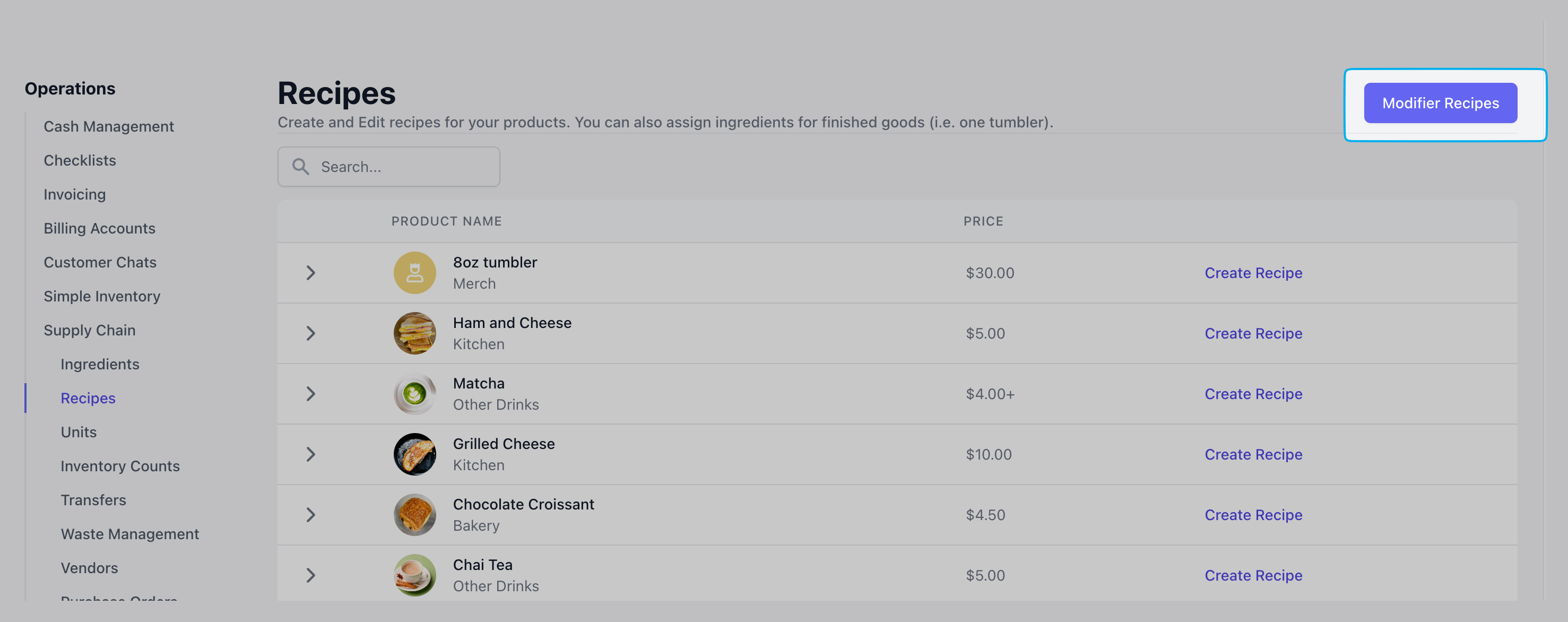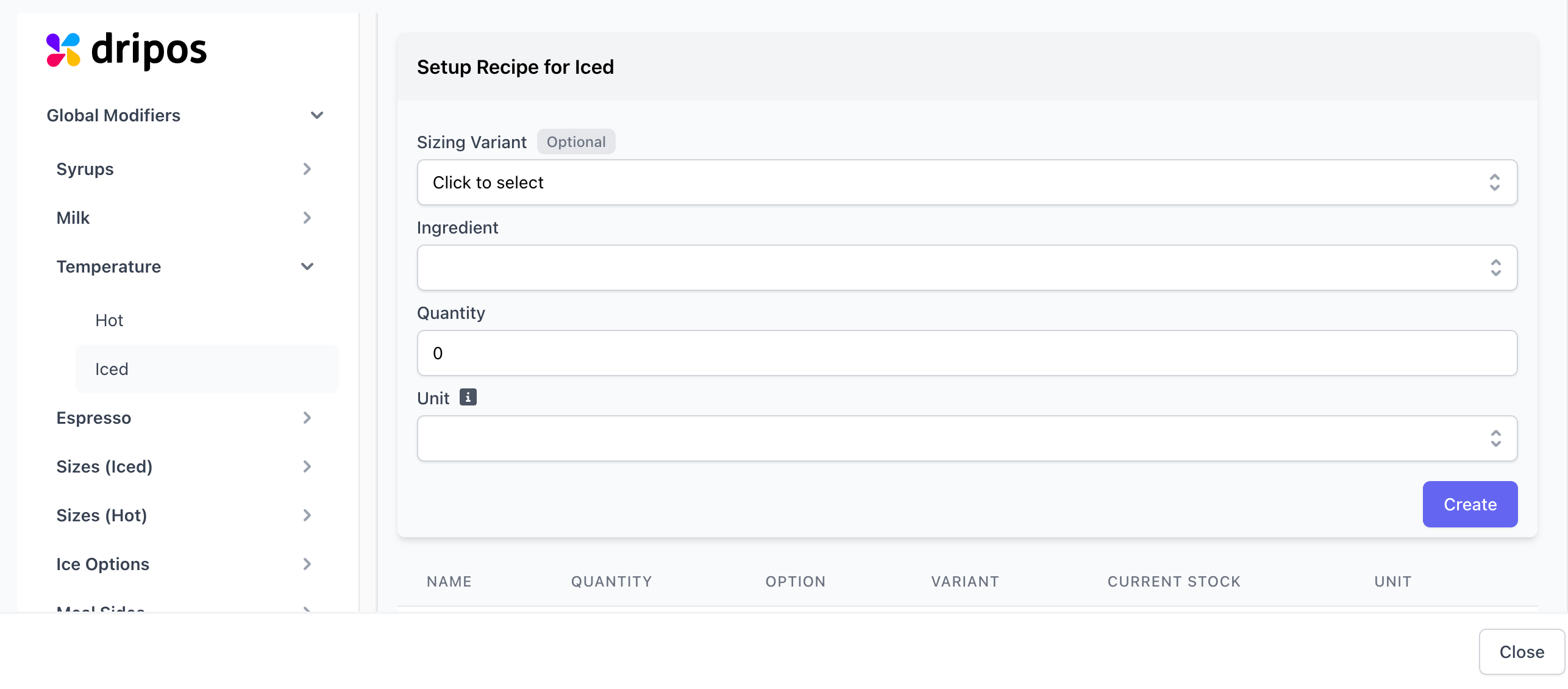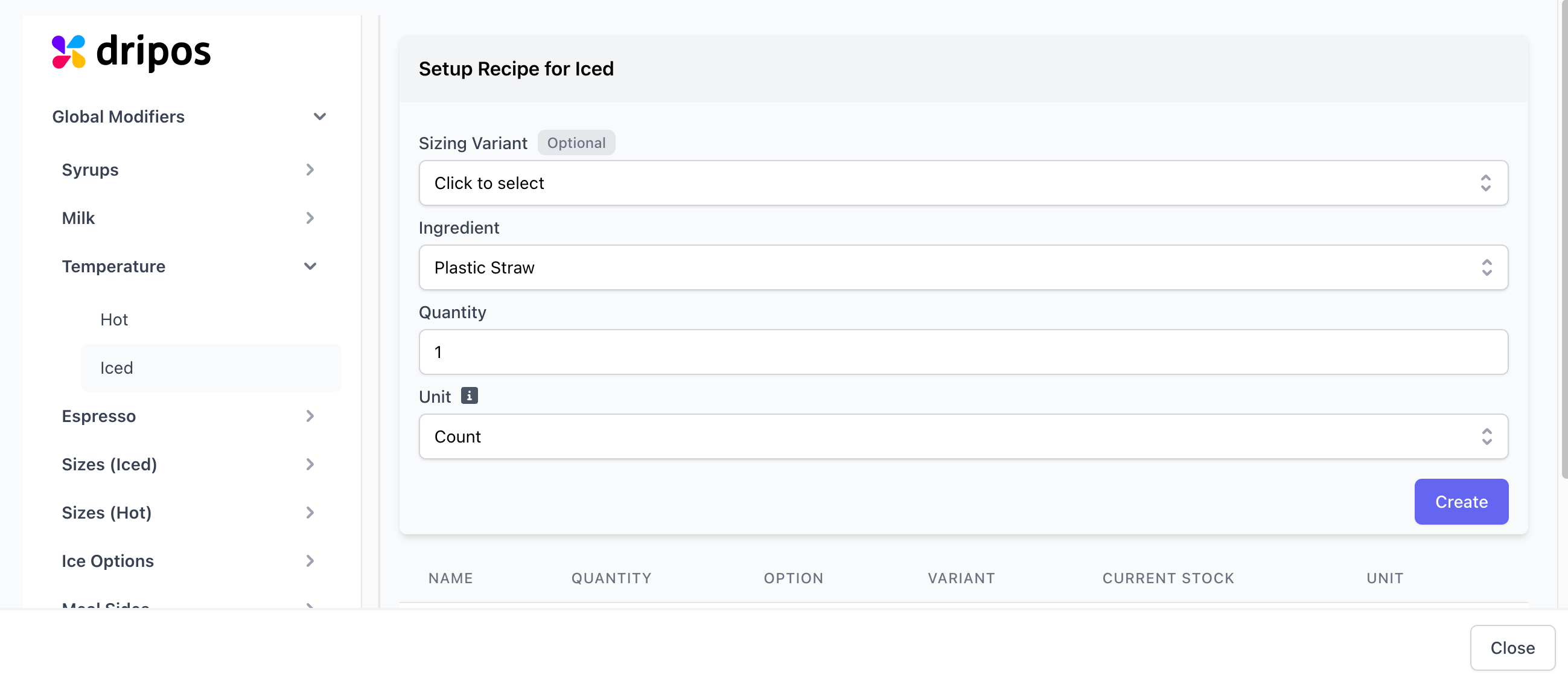Create a Unit
Every ingredient will be measured with units. Dripos provides standard units of measurement that are preset and ready for use. If the unit you need is not a standard unit, you may create a custom unit!Standard Units
Standard Units
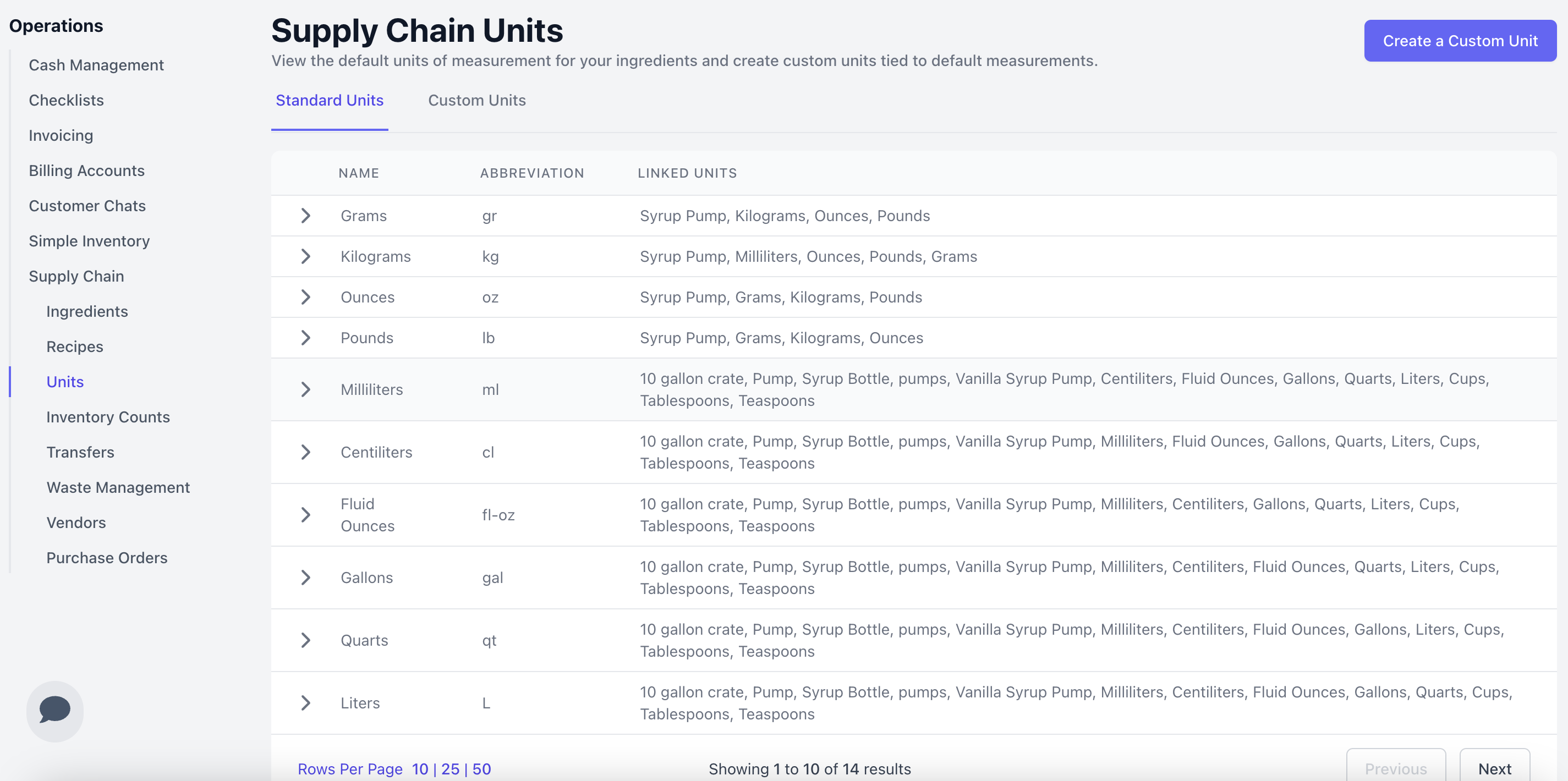
Custom Units
Custom Units
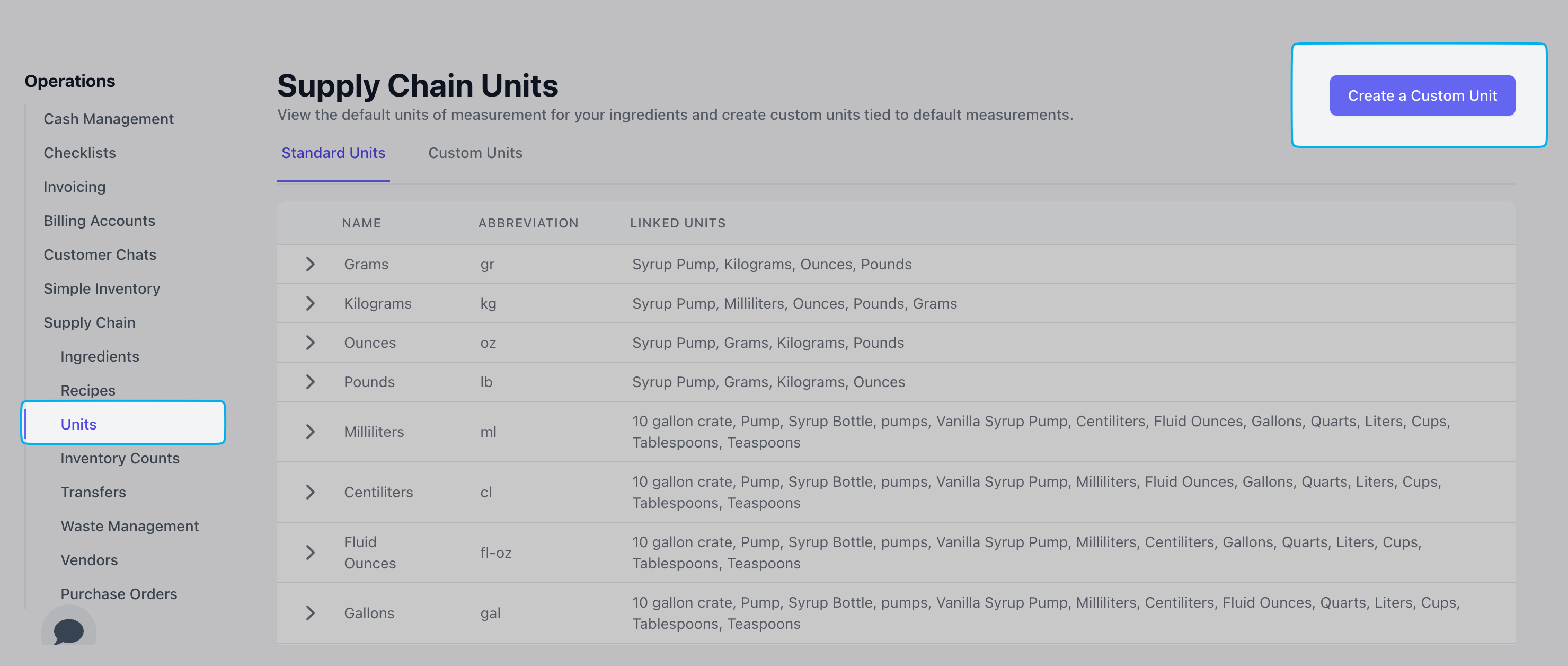
Case of Cups
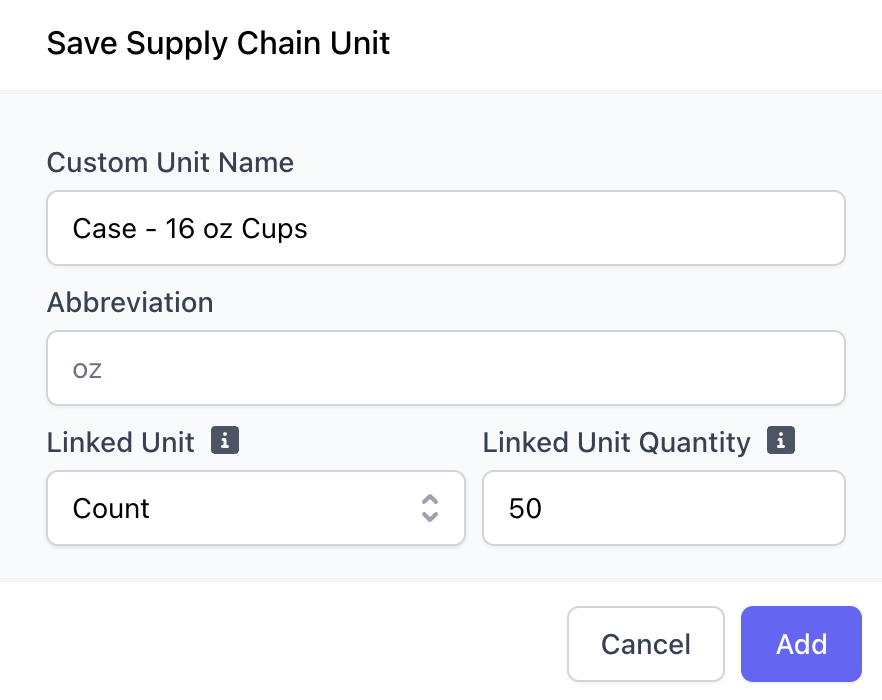
Chocolate Sauce
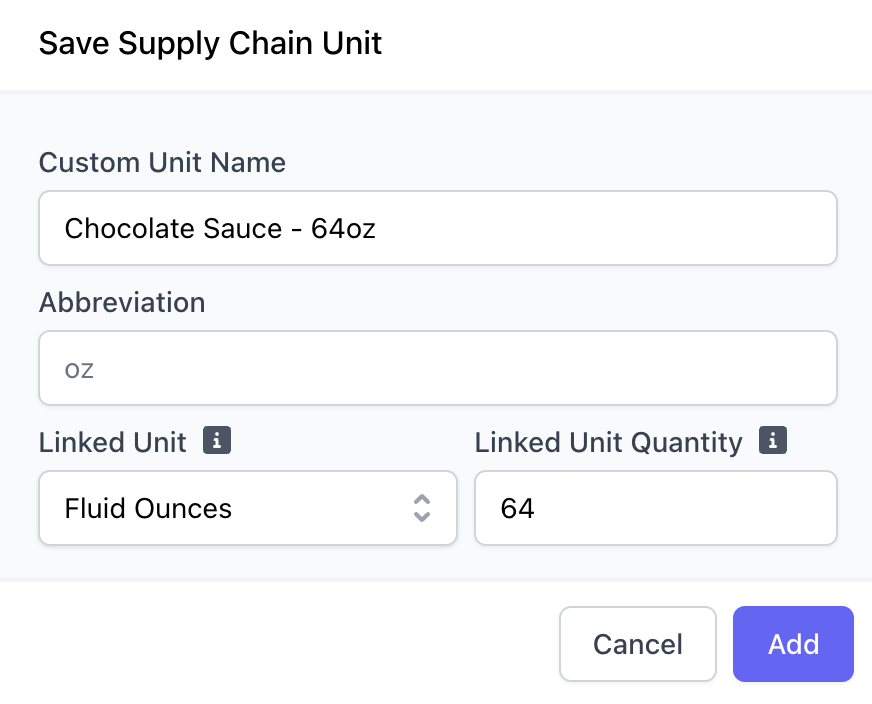
- Name, i.e. Case - 16oz cups, Chocolate Sauce - 64oz
- Abbreviation: A short code (2–3 letters) for your own internal tracking or labeling
- Linked Unit: The relational unit used to convert this custom unit, i.e. count, fluid oz
- Linked Unit Quantity: How much of the relational unit goes into one of the custom units, i.e. 50, 64
Create an Ingredient
Ingredients make up a product’s recipe. For example, a latte will be made up of espresso, various milk types, various cup sizes, various syrups, and so forth. These are the goods that you will track the quantity of in your supply chain system.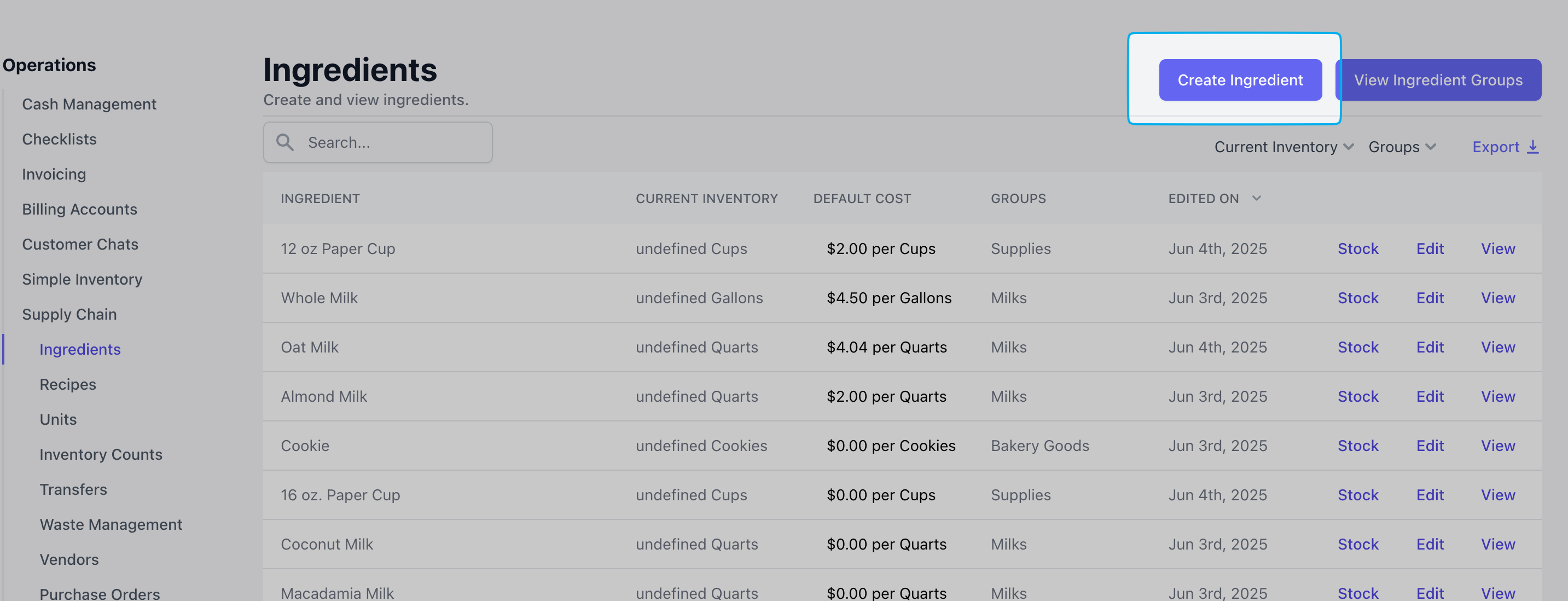
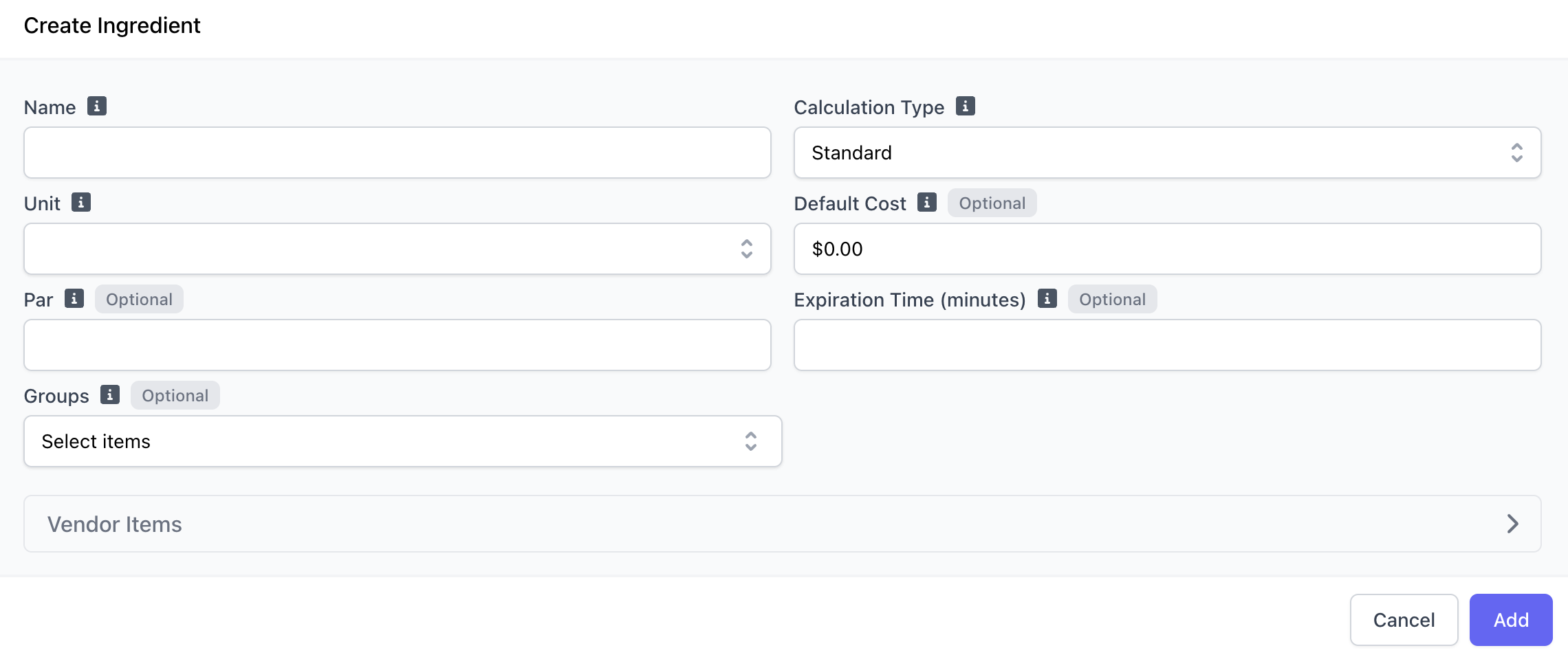
Name
Calculation Type
- Standard (Default): Any stocking event will add/subtract from this ingredient’s stock directly.
- Consume Sub-Recipes: When a sub-recipe is linked to the product, stock adjustments will apply both to this ingredient and to the ingredients included in the sub-recipe.
This option will only appear if the ingredient has a sub-recipe attached. Click here to learn about sub-recipes.
Unit
Default Cost (optional)
Par (optional)
Expiration Time (optional)
Groups (optional)
Example Ingredients
Whole Milk
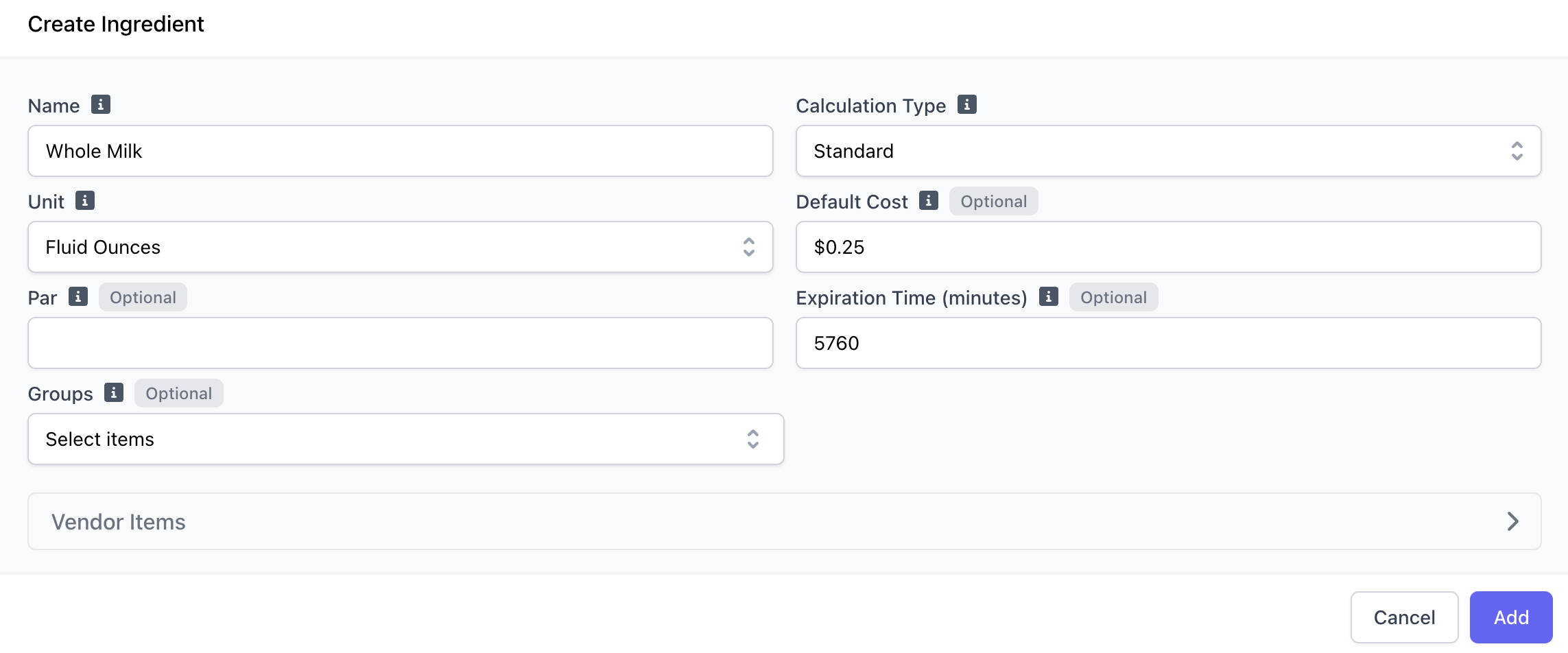
Espresso
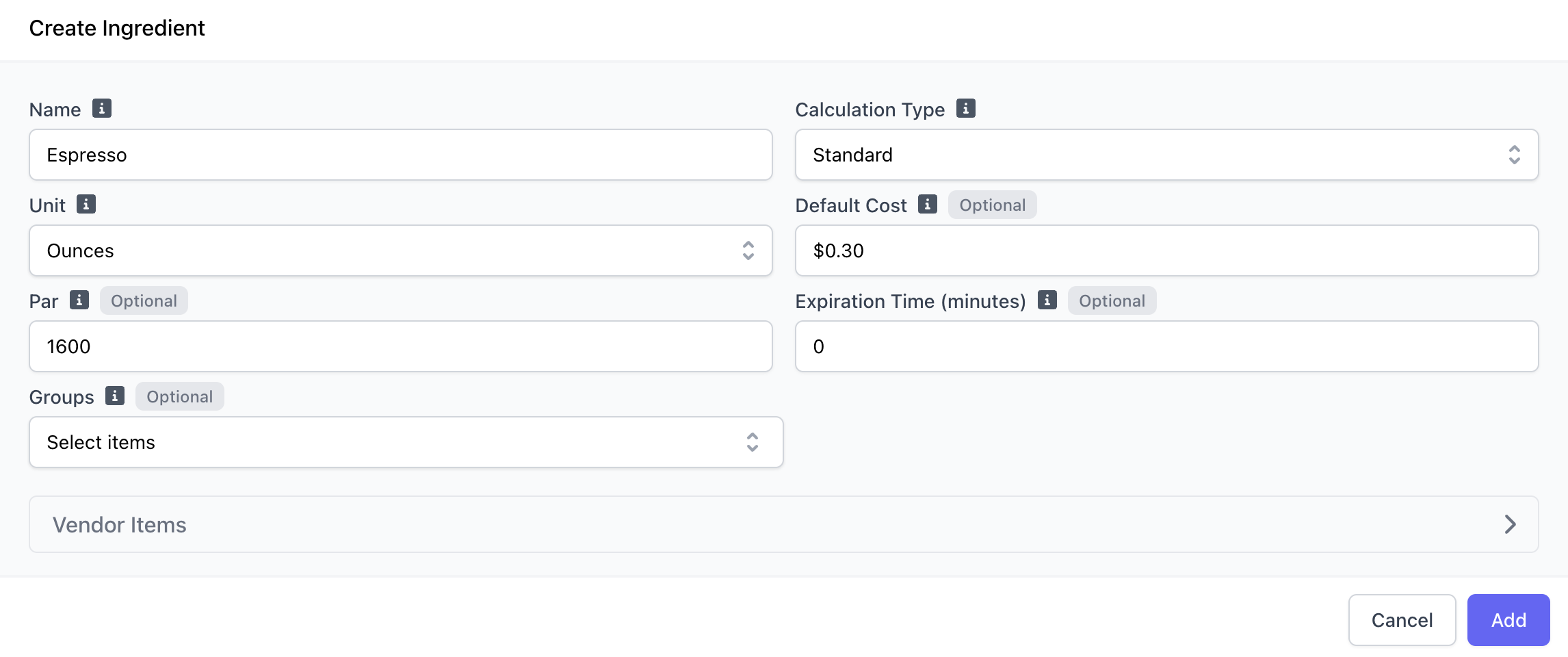
Vanilla Syrup
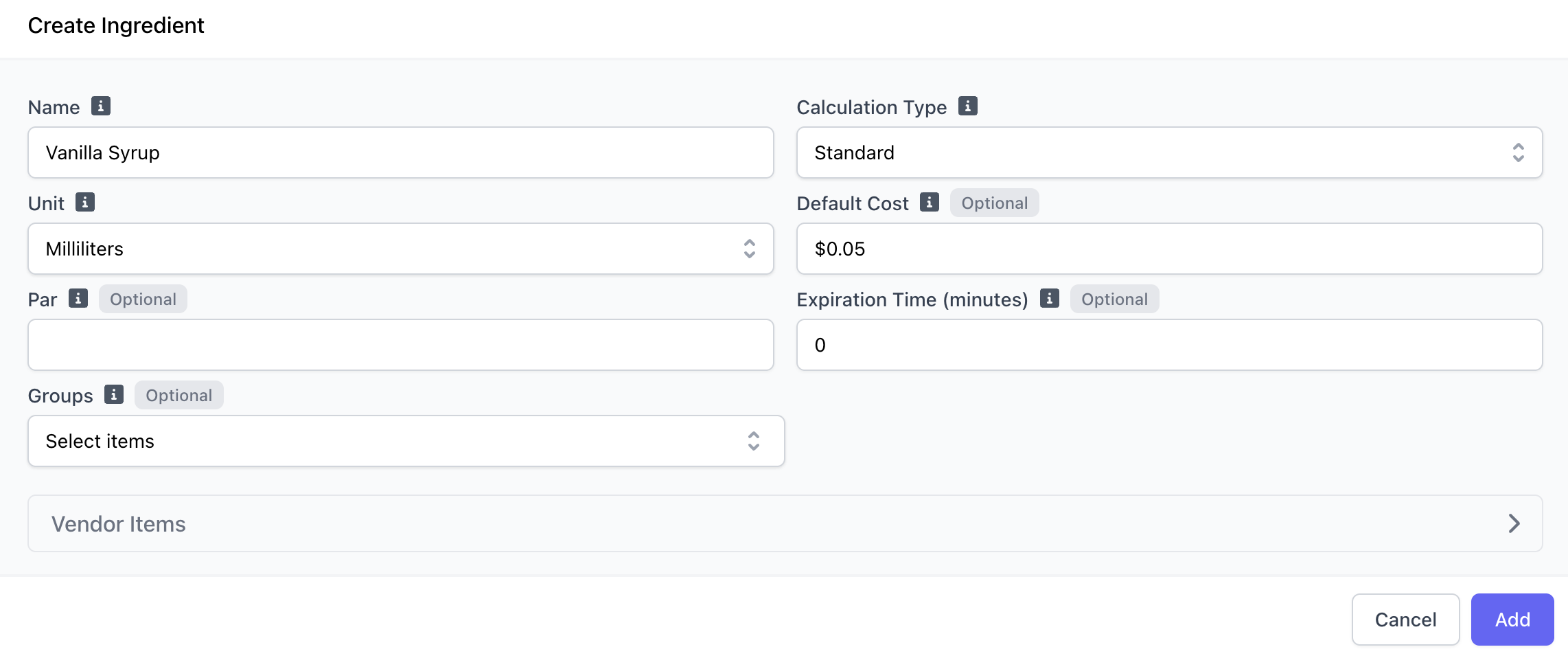
Blueberry Muffin
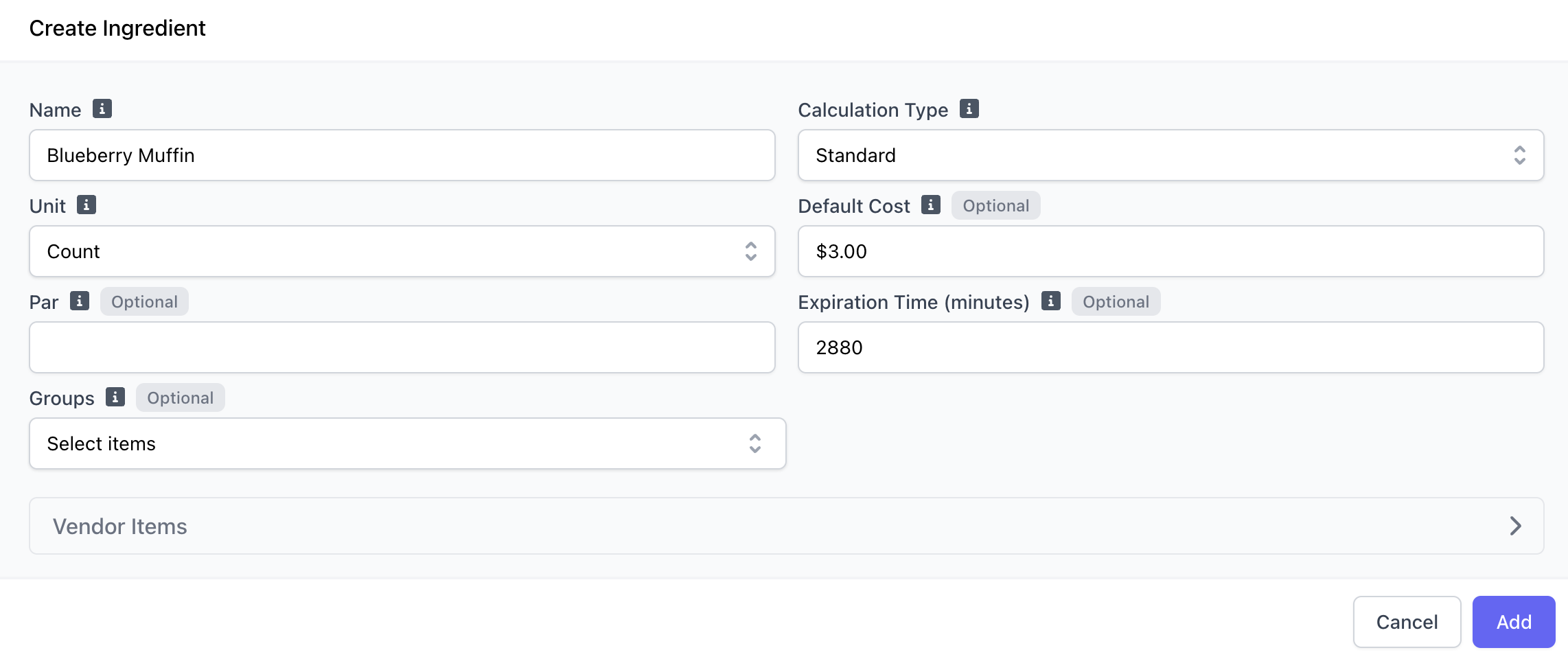
16 Oz Cup (custom unit)
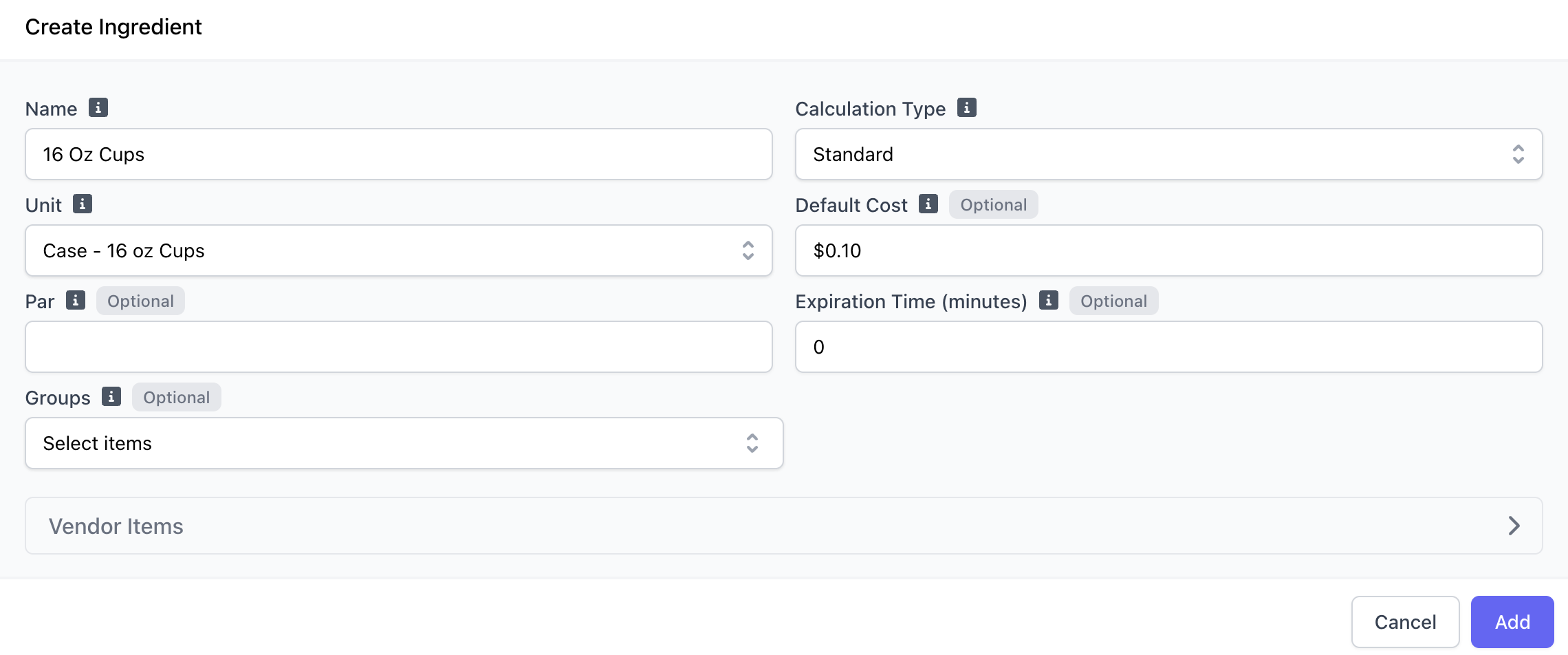
Chocolate Sauce (custom unit)
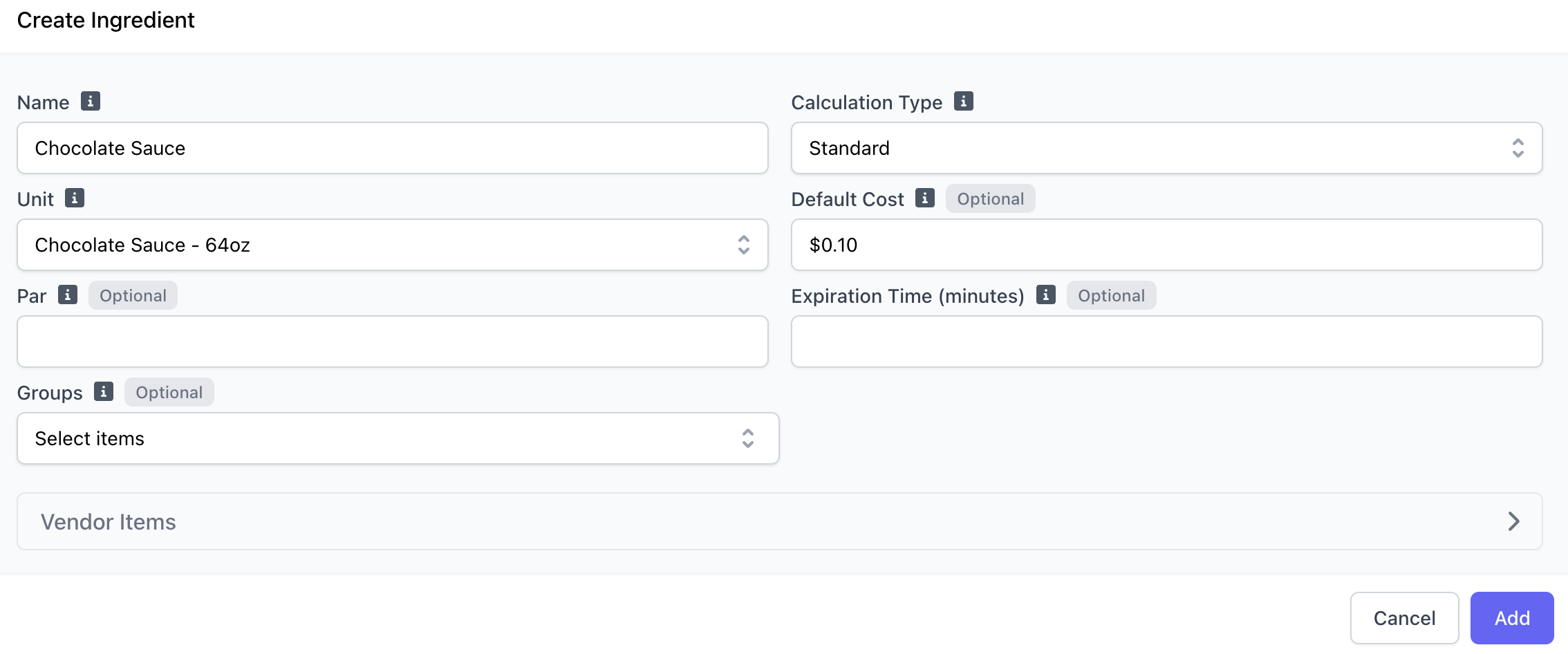
Ingredient Groups
Organize your ingredients into groups to easily filter and manage your ingredient view.Create an Ingredient Group
Create an Ingredient Group
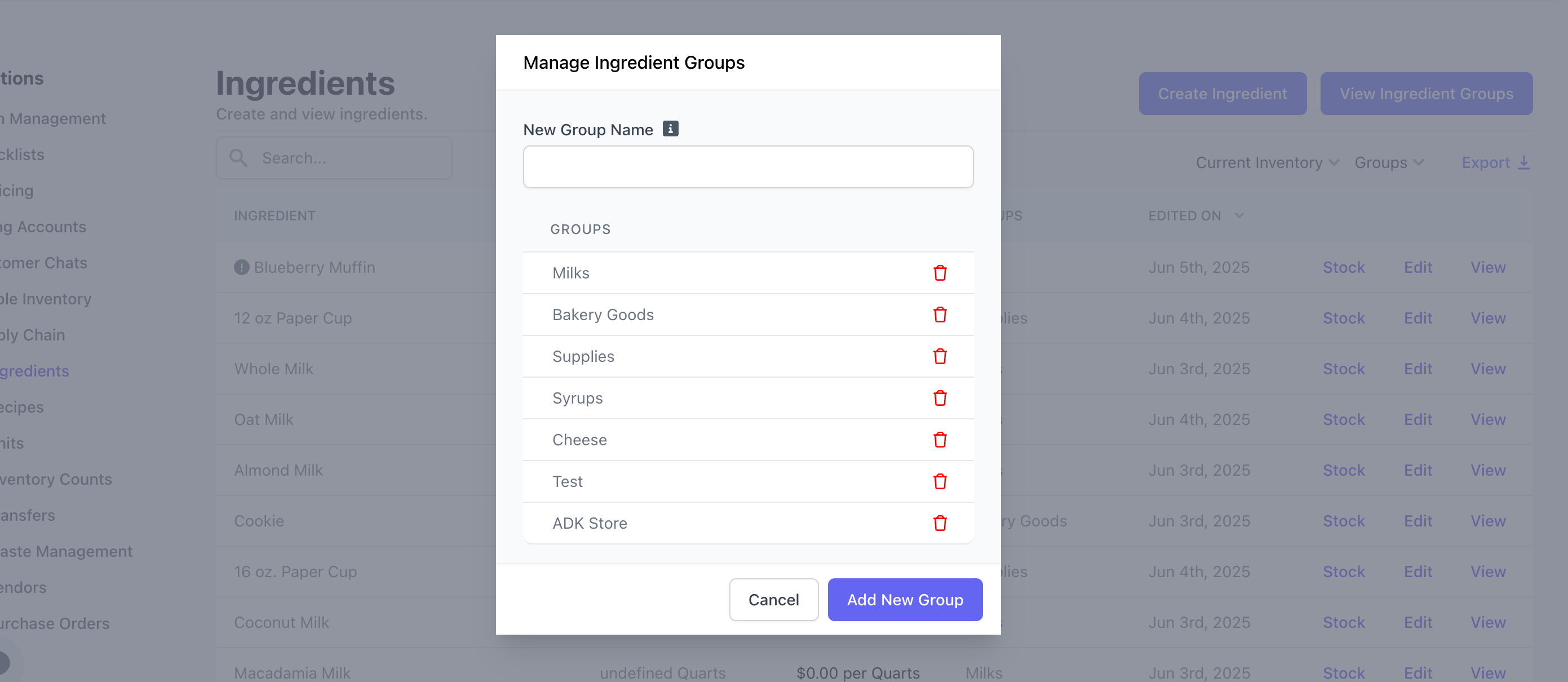

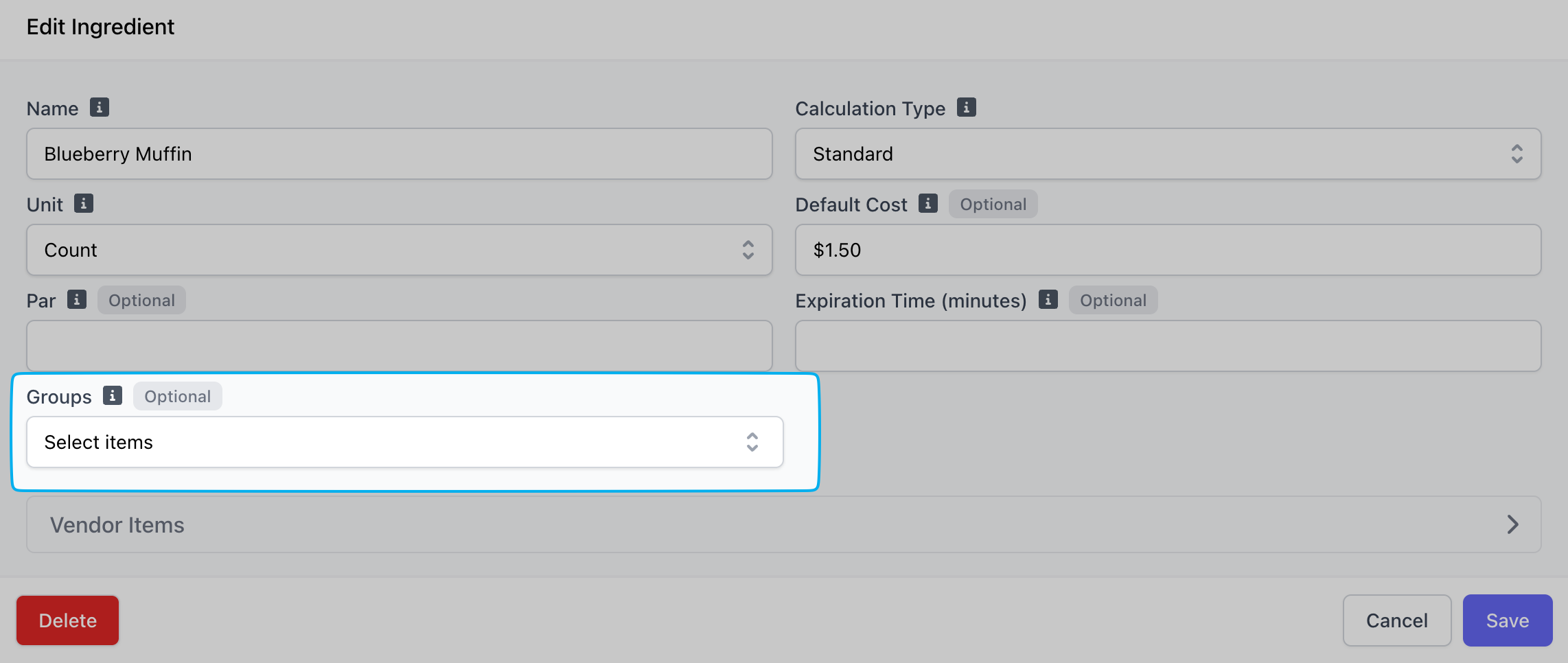

Activity Logs
Track your Inventory History View all activity related to your ingredients: ✅ Sales | ✅ Quick Stock adjustments | ✅ Waste | ✅ Inventory Counts | ✅ Purchase Orders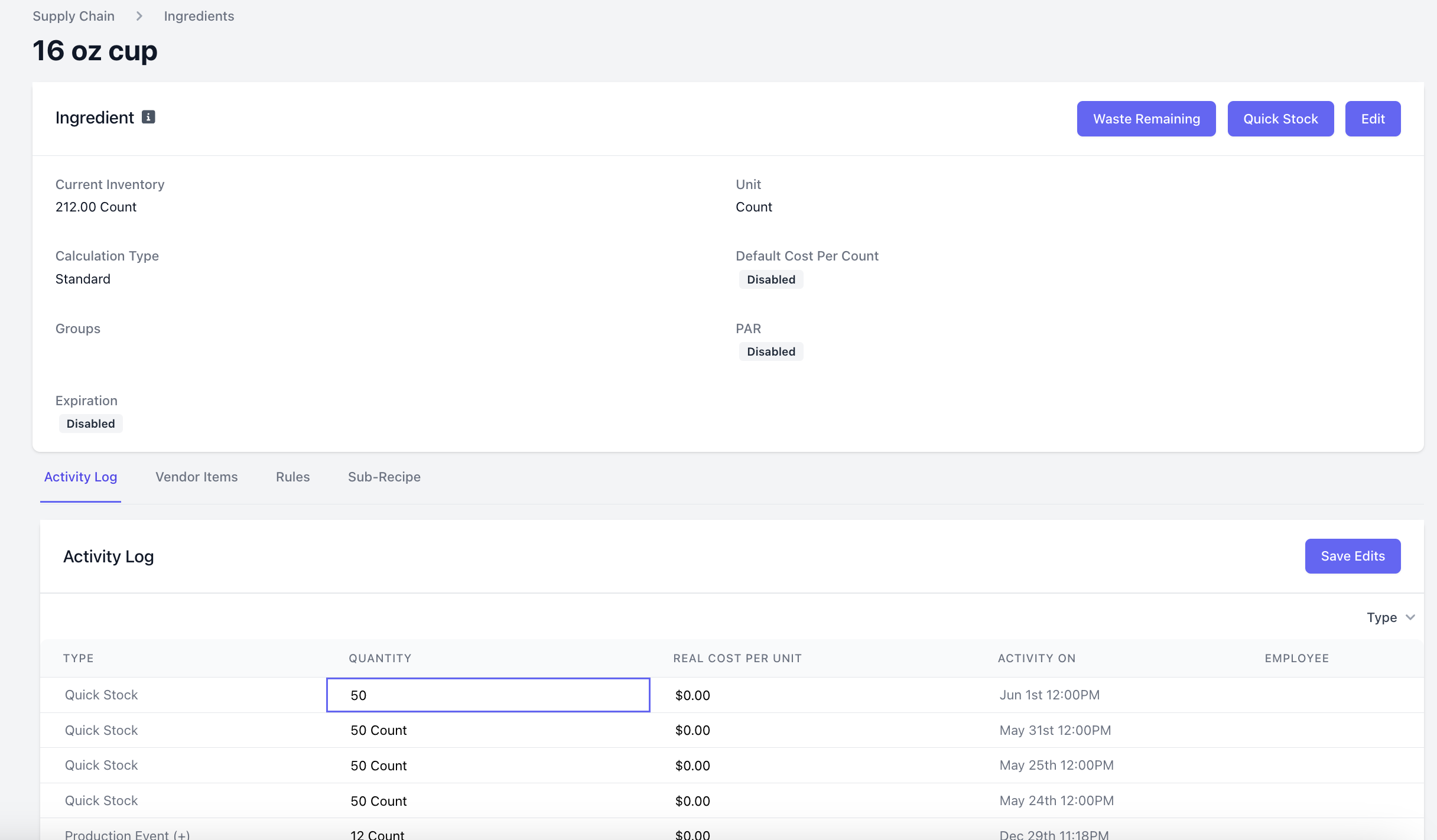
On the Dashboard go to Supply Chain > Ingredients > View an ingredient > at the bottom of the page is the Activity Logs tab. To edit an activity, click on the quantity or cost of any line item to edit the value > click Save Edits
Rules
Automate ingredient restocking Set up automatic restocking schedules for individual ingredients—perfect for ingredients you receive or make on a regular basis.Create an Ingredient Rule
Create an Ingredient Rule
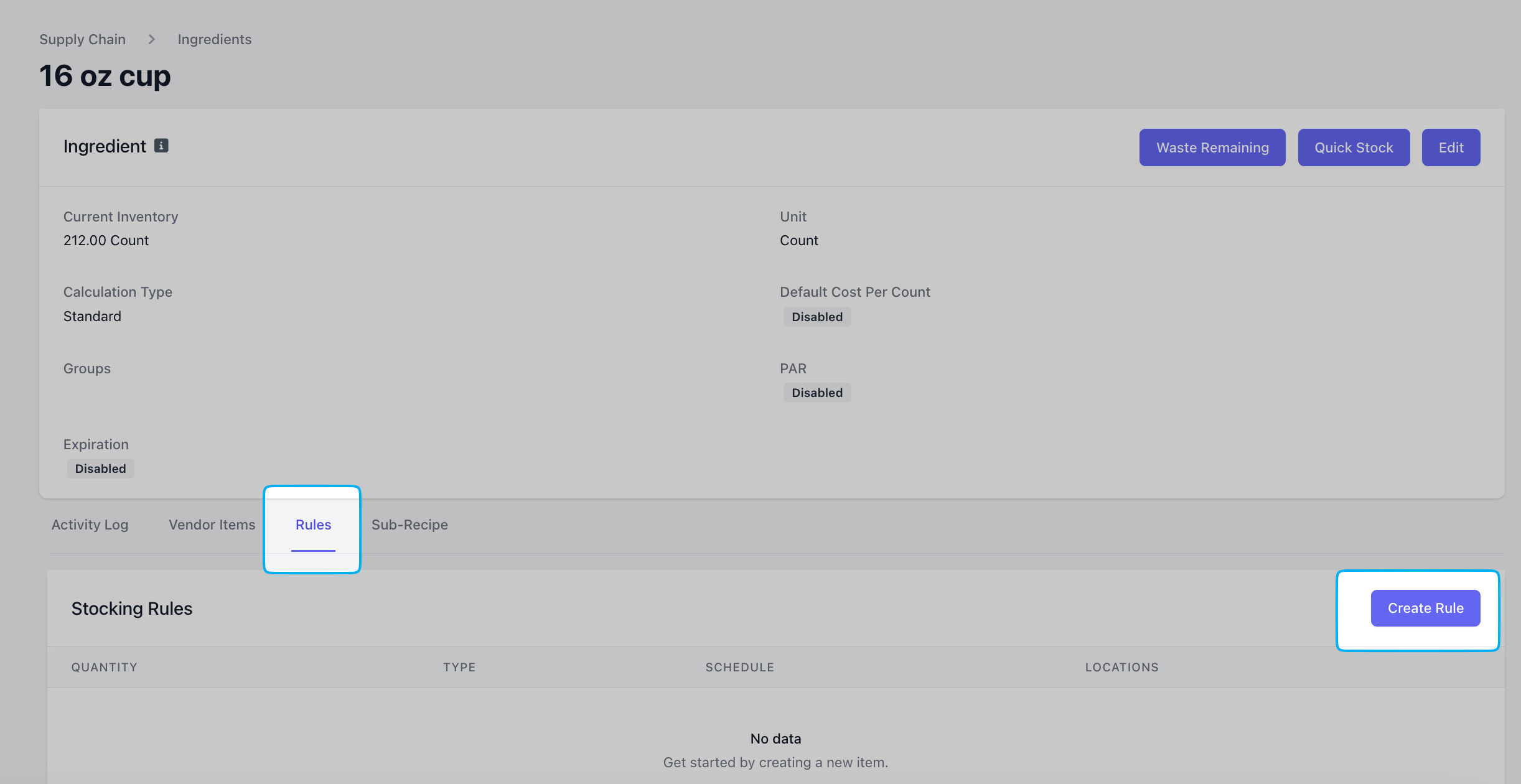

Stocking Type
- Record Waste: If selected, surplus stock will be designated as waste, and a corresponding waste event will be logged.
Quantity
Unit
Day(s) & Time
Sub Recipes
Track ingredients composed of other ingredients by creating sub-recipes. Do you make your syrups in-house? Are your breads made fresh daily? Use subrecipes to track ingredients used to make those ingredients attached to products for sale. Learn how to stock sub-recipe ingredients and their corresponding ingredients properly with Production Events.Create a Sub Recipe
Create a Sub Recipe
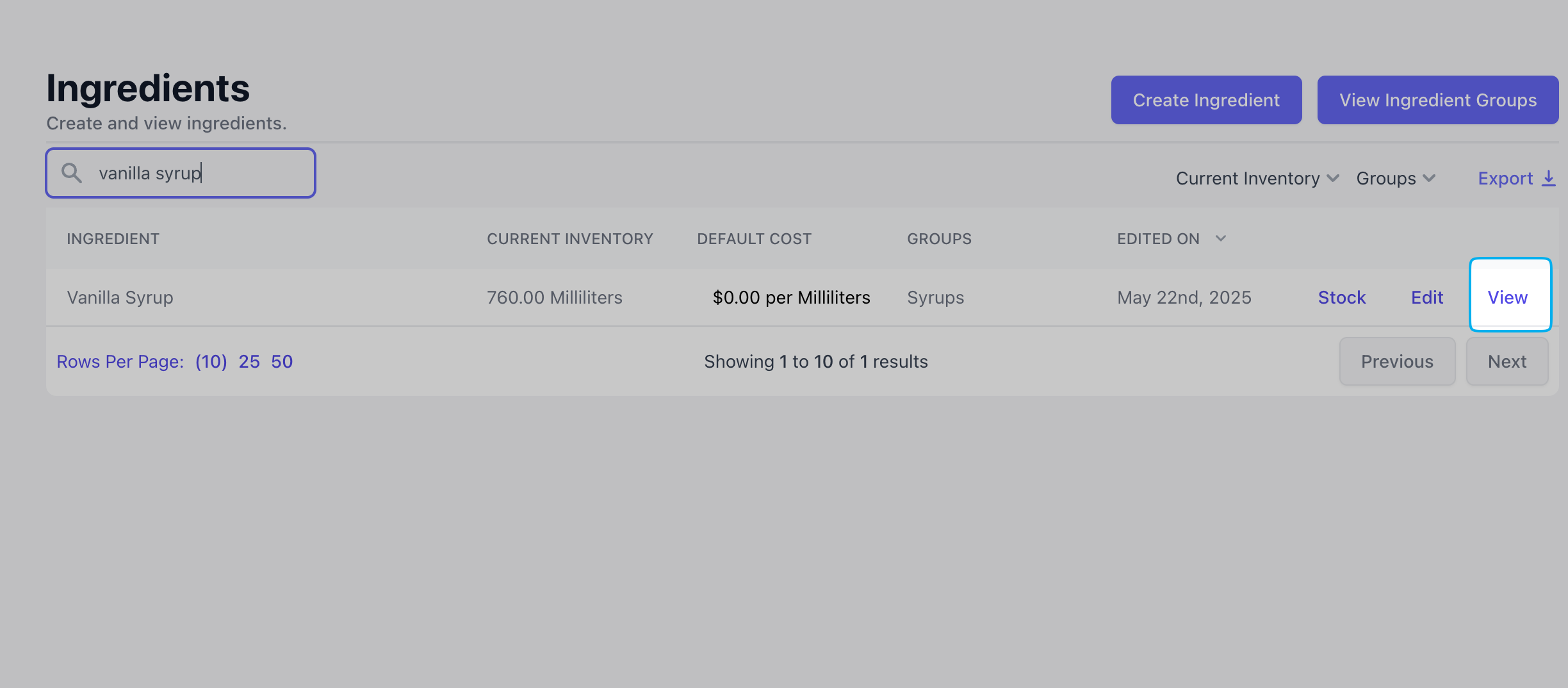
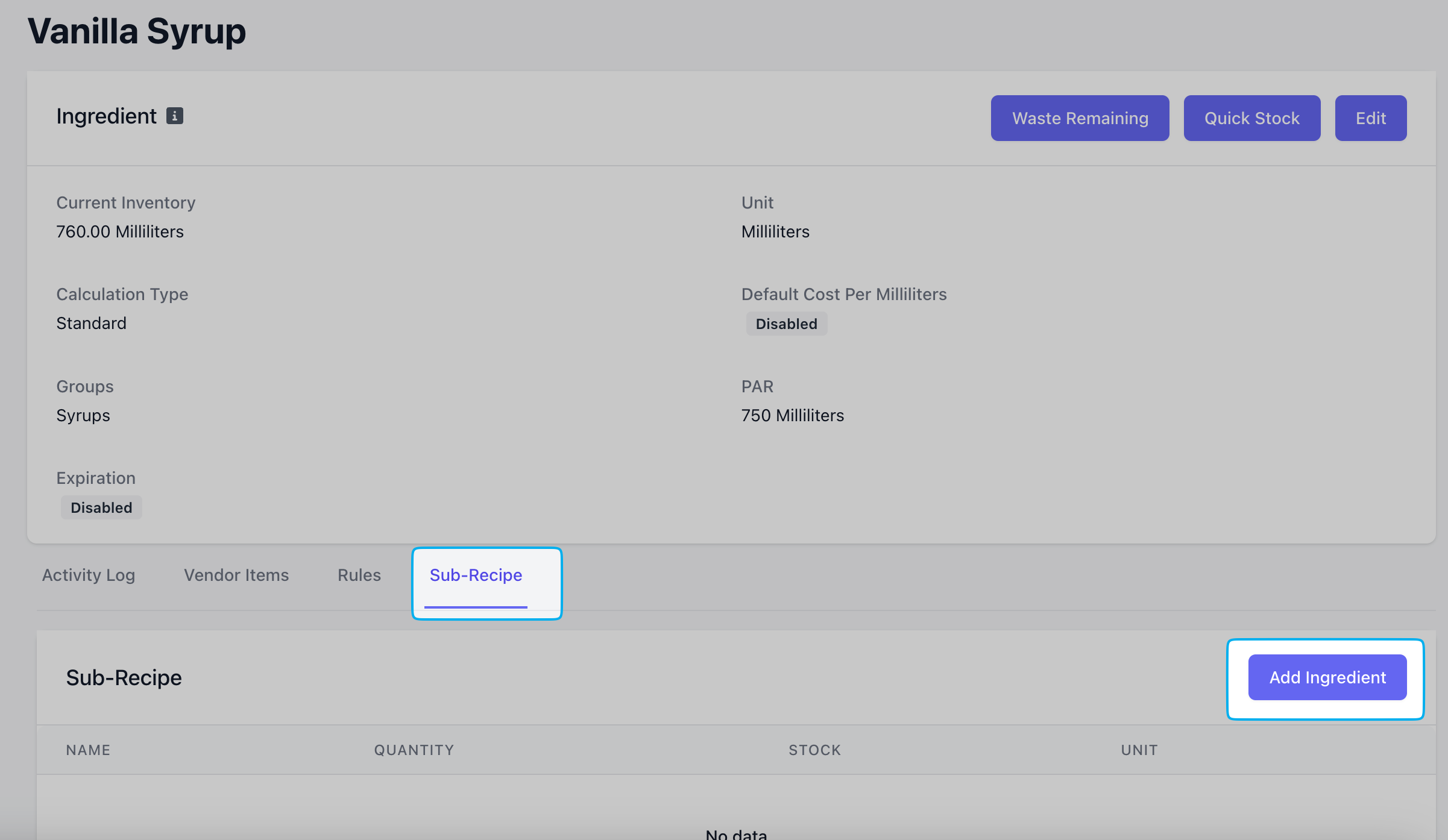
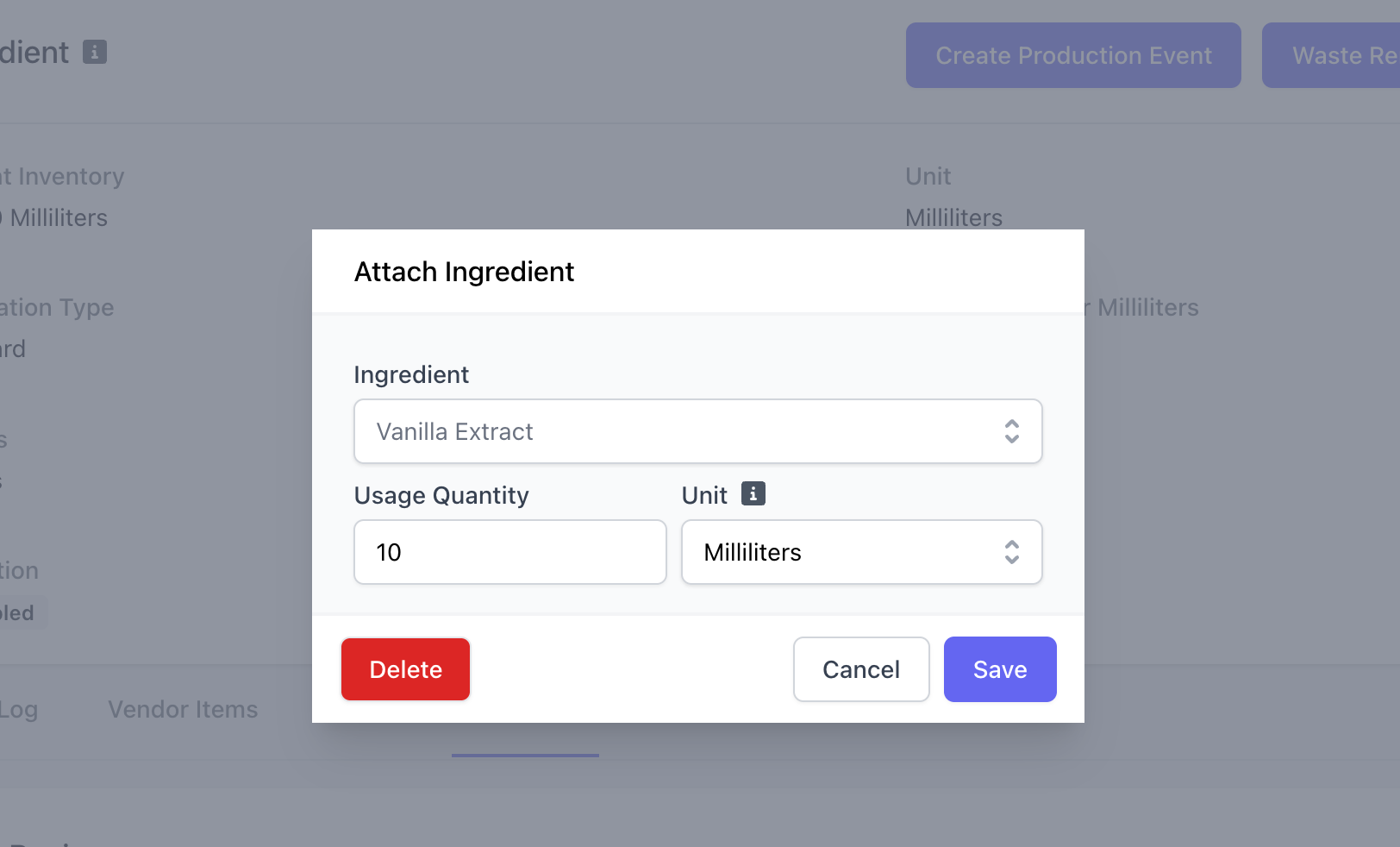
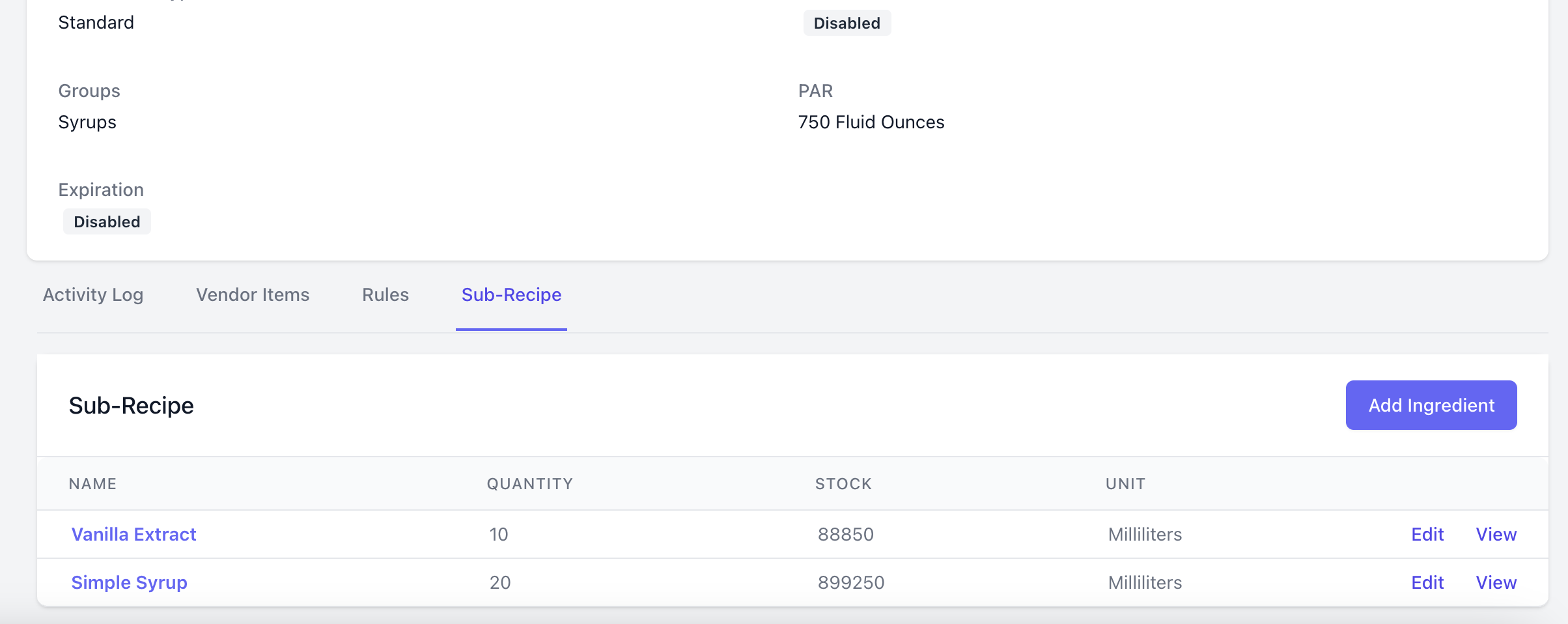
Create a Production Event
Create a Production Event

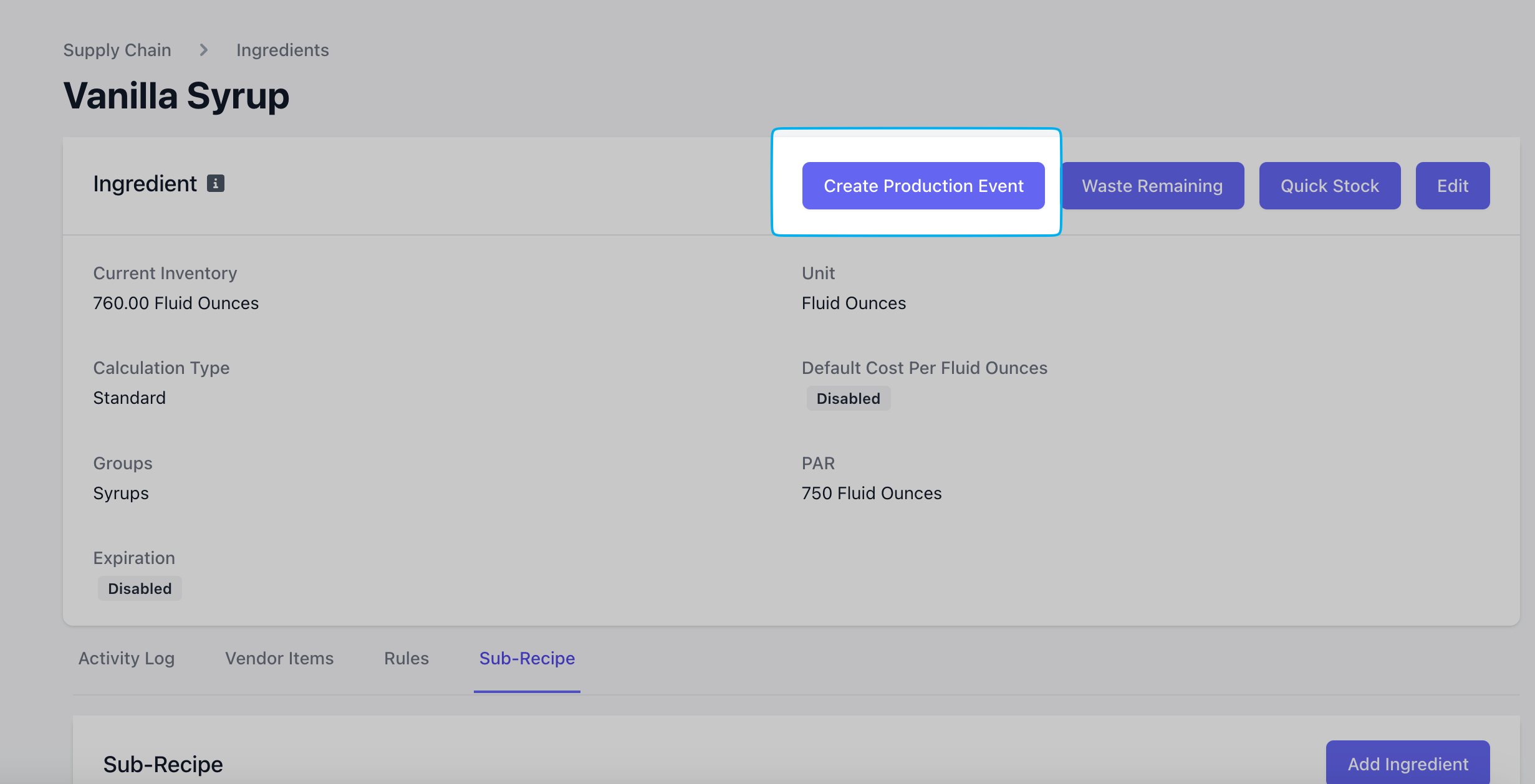
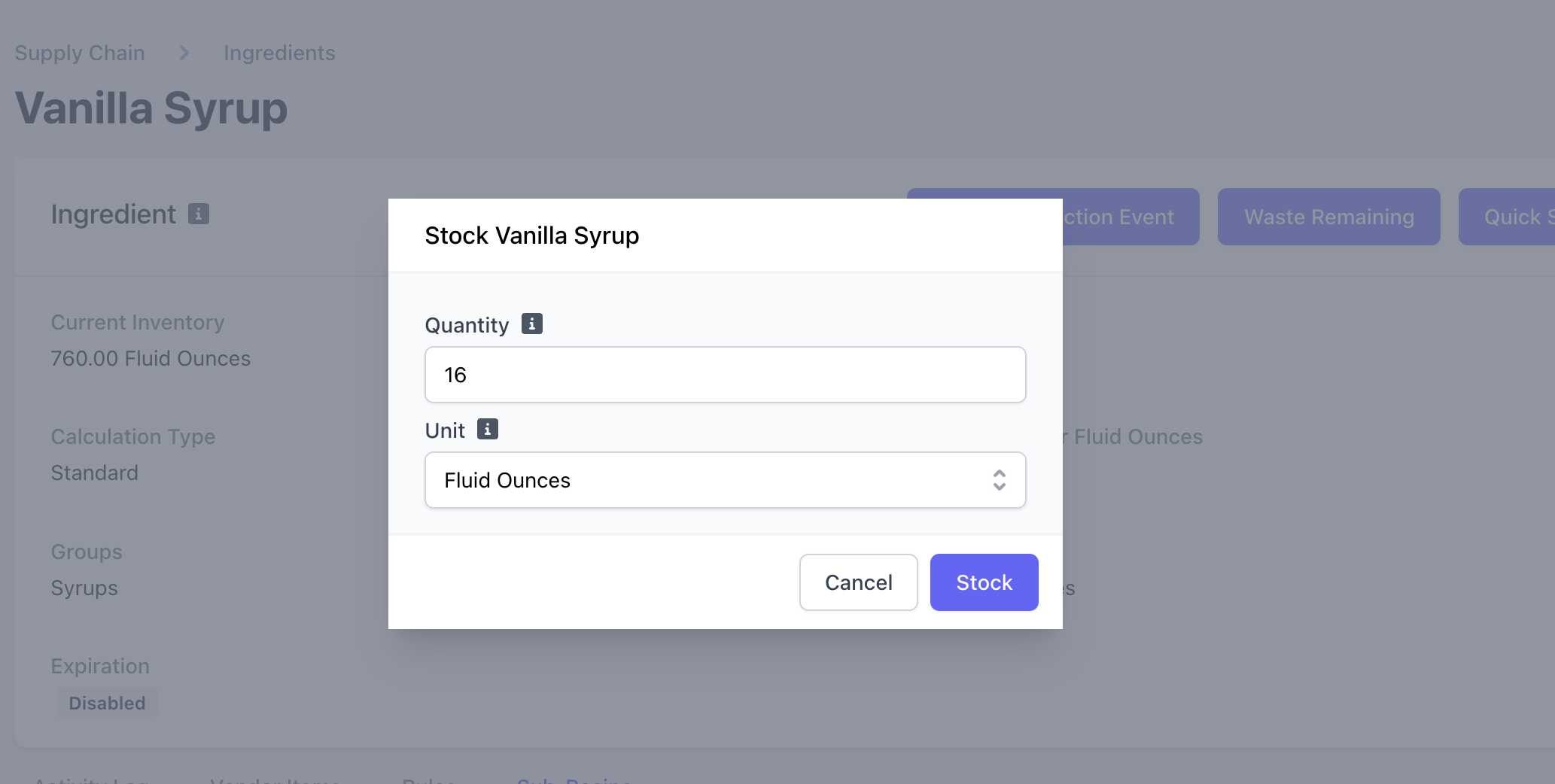
Vanilla Extract
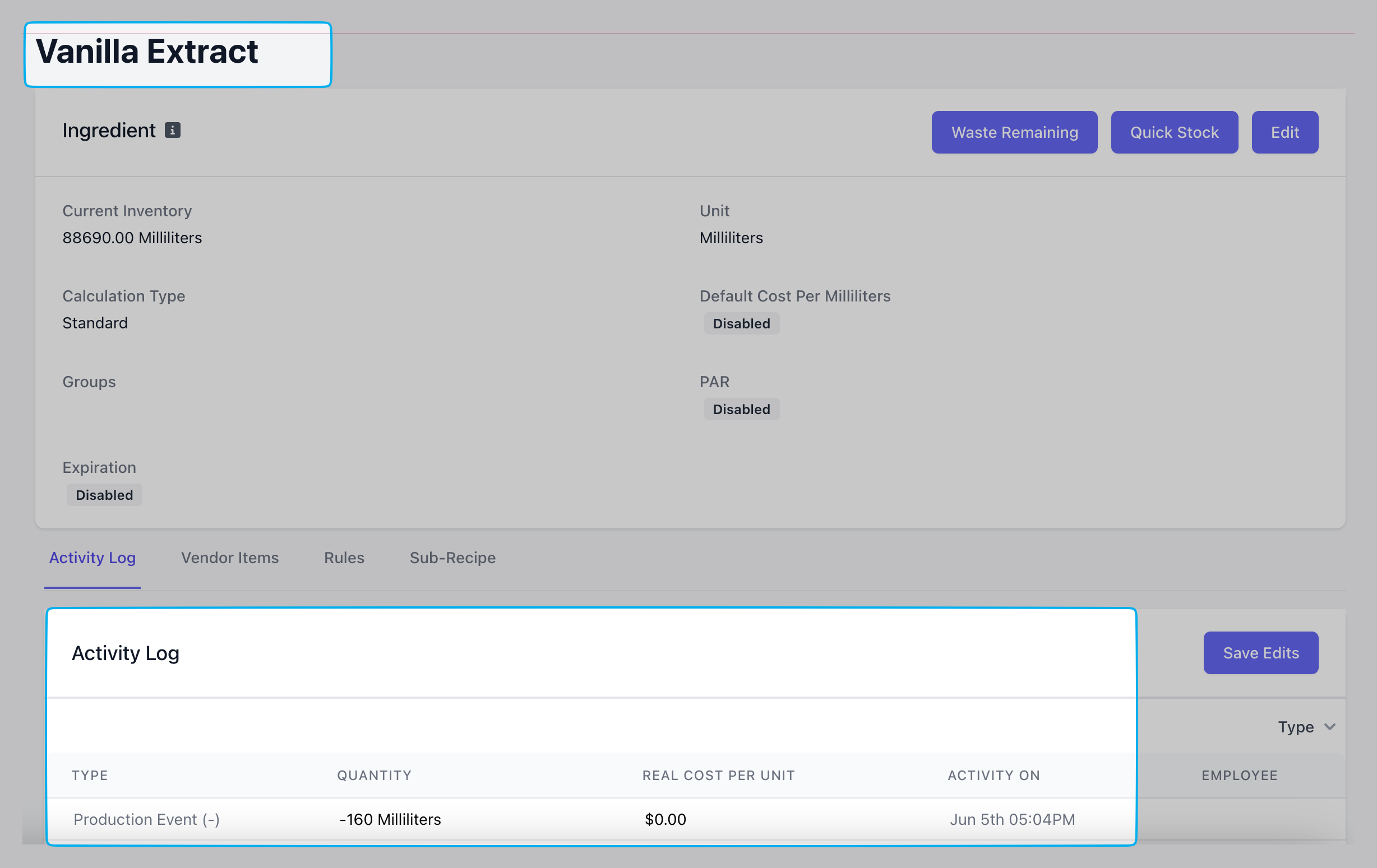
Simple Syrup
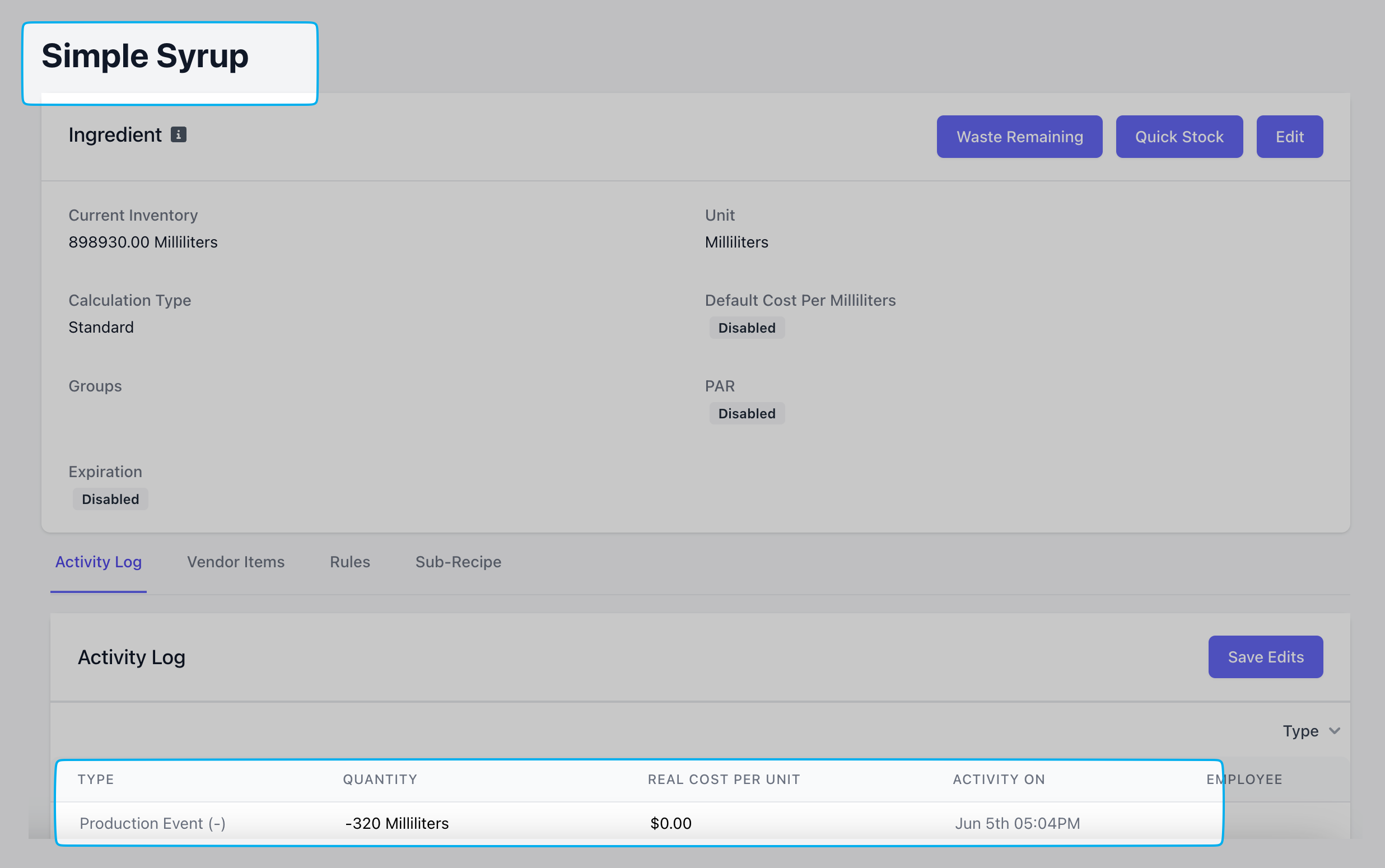
Build a Recipe
Every product in your menu has a recipe ready to built upon in Dripos Supply Chain. When a product is sold on any Dripos platform, the stocks of ingredients linked to its recipe are automatically reduced by the amount used.Customizable Products
Follow these steps to create a recipe for a customizable product that relies on modifier options for ordering (i.e. espresso drinks, breakfast sandwiches, etc.)Create Recipe for Customizable Products
Create Recipe for Customizable Products
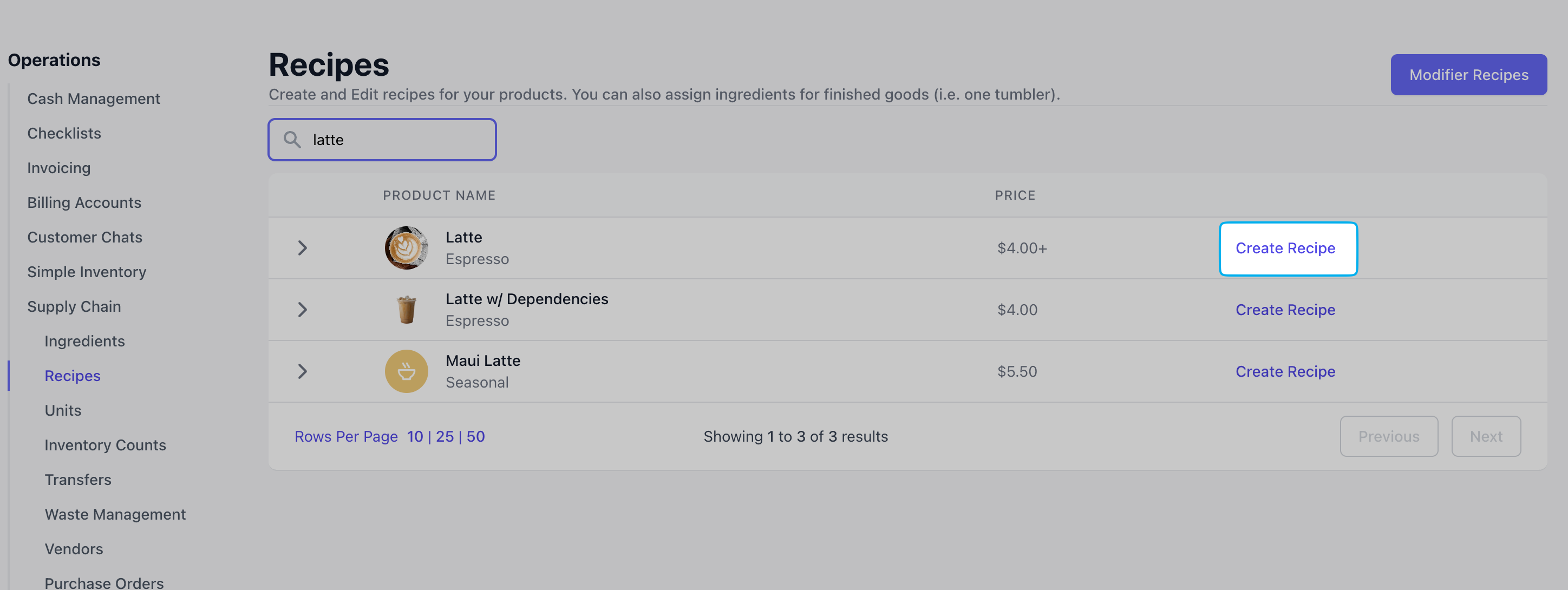
Understanding Variants
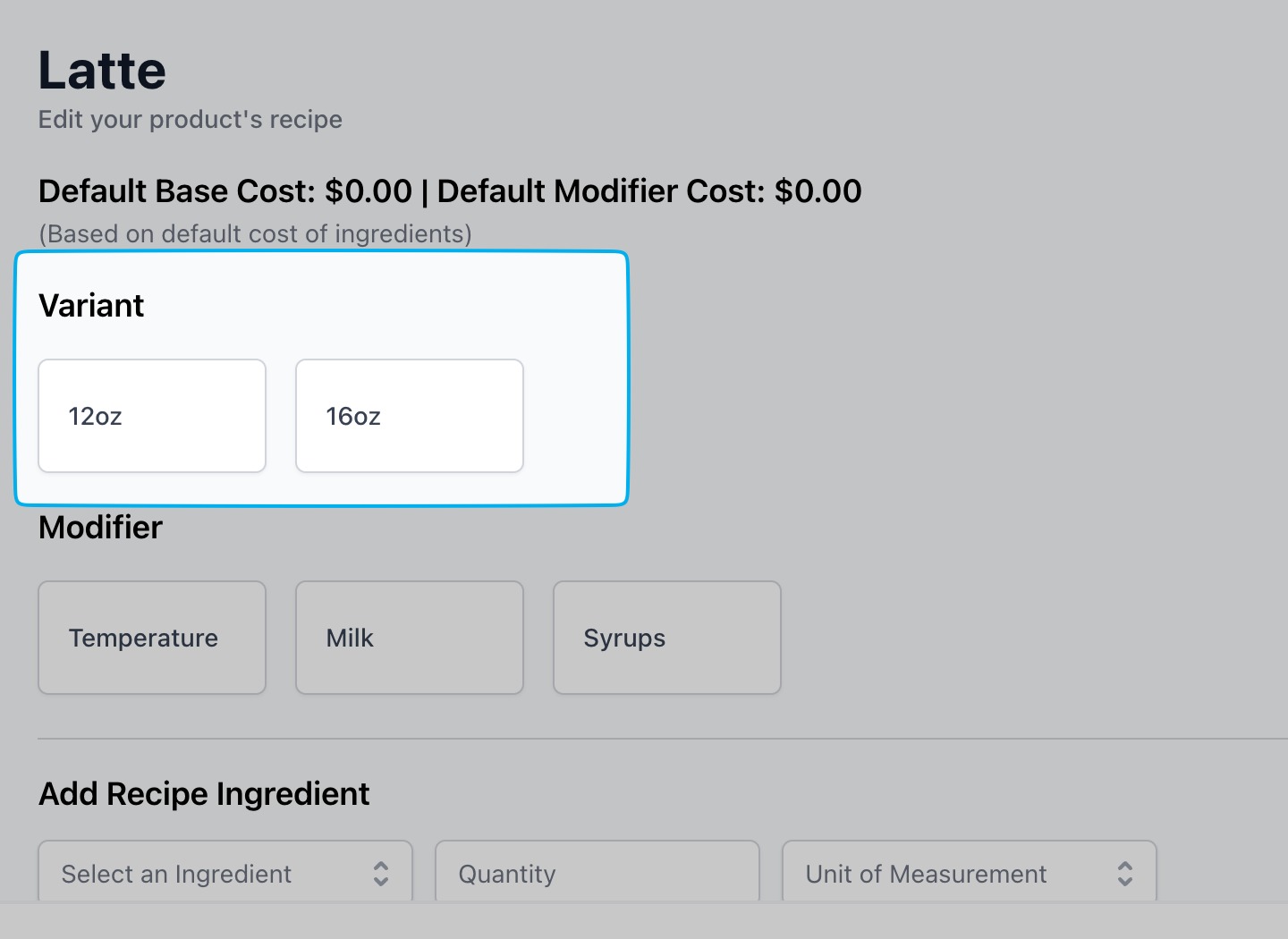
Add Ingredient to Variant

Add Ingredient to Variant and Modifier
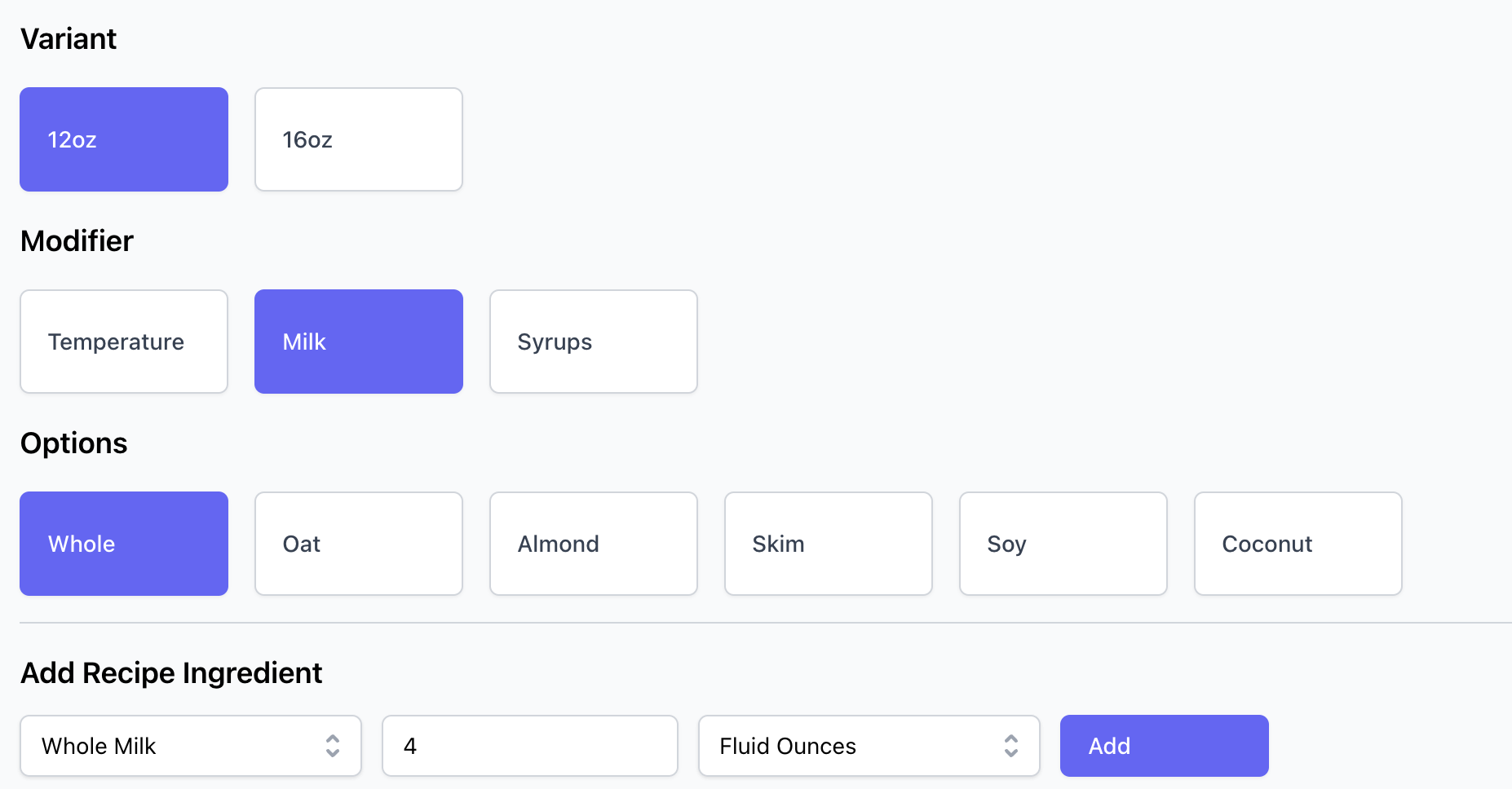
View Recipes Ingredients
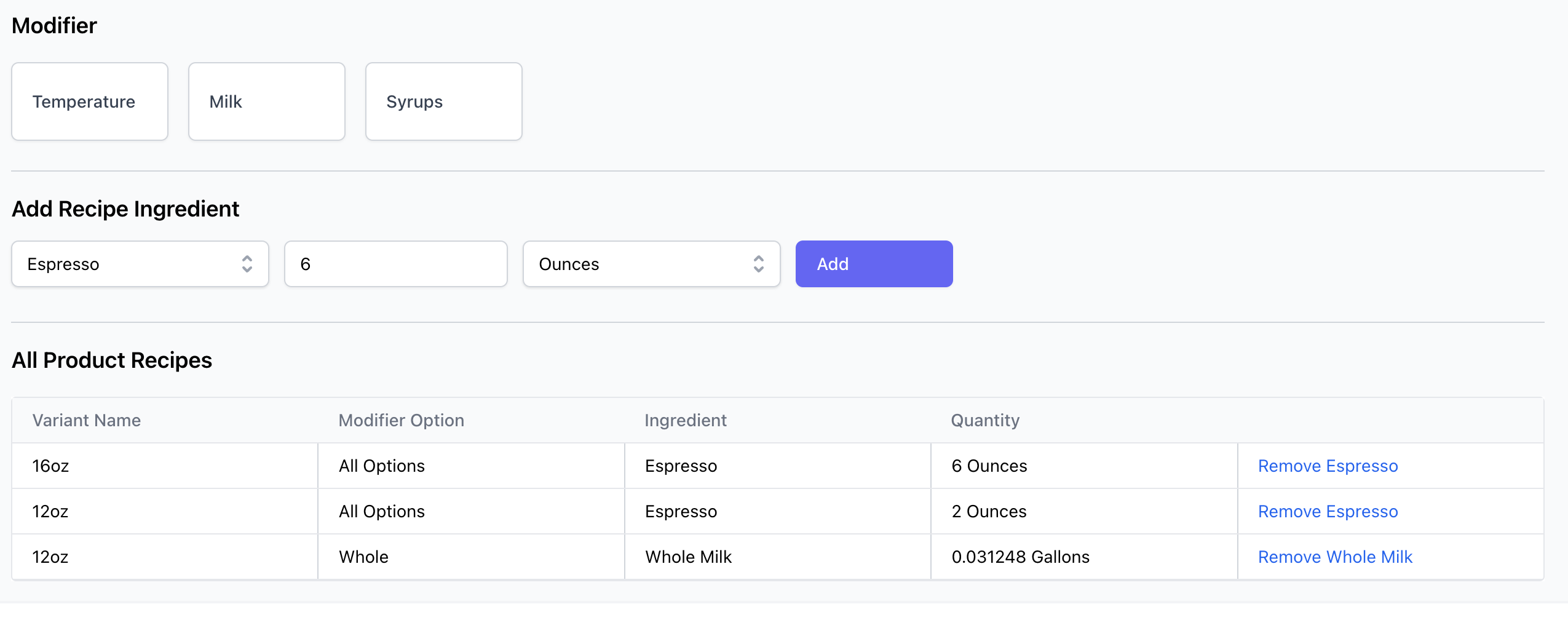
Grab & Go Products
Use supply chain to track quantity of simple inventory products such as bakery items and canned beverages.Single Product
Single Product
Create Ingredients
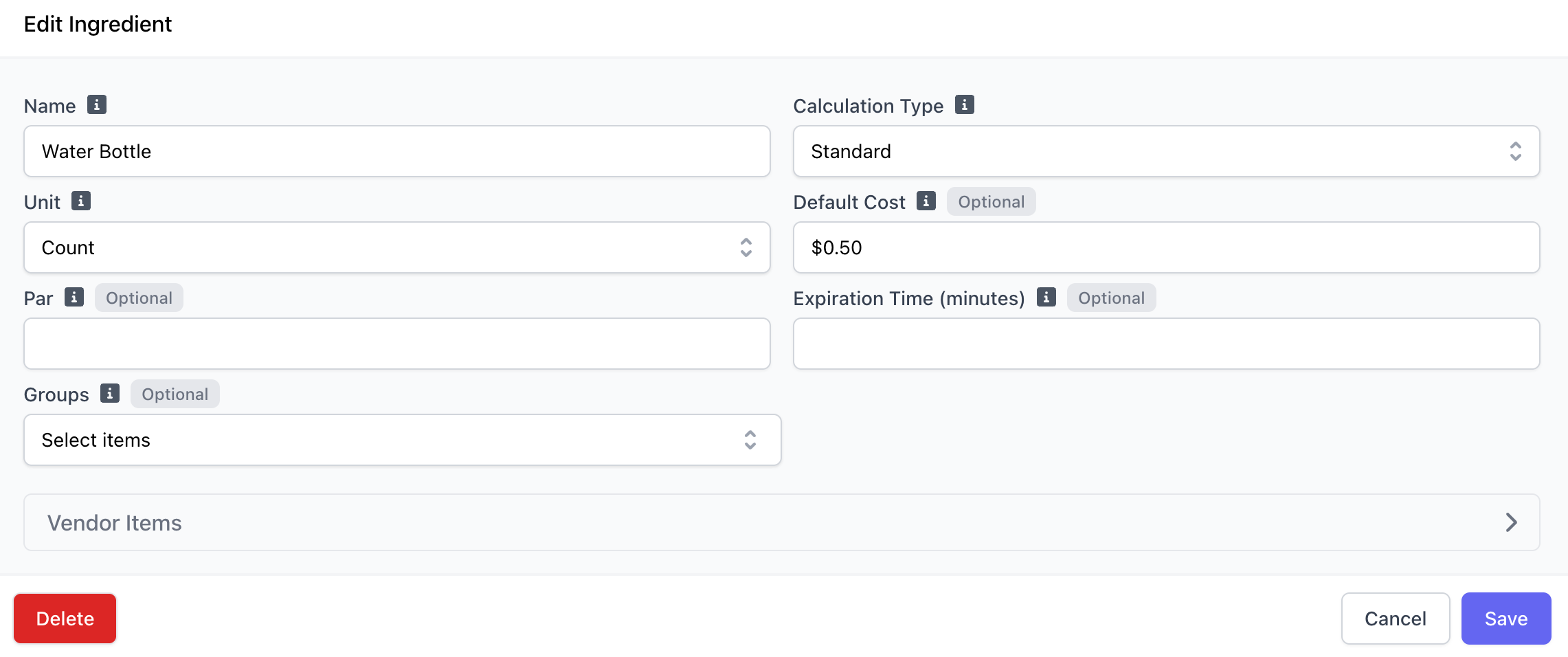
Add Ingredients to Recipe
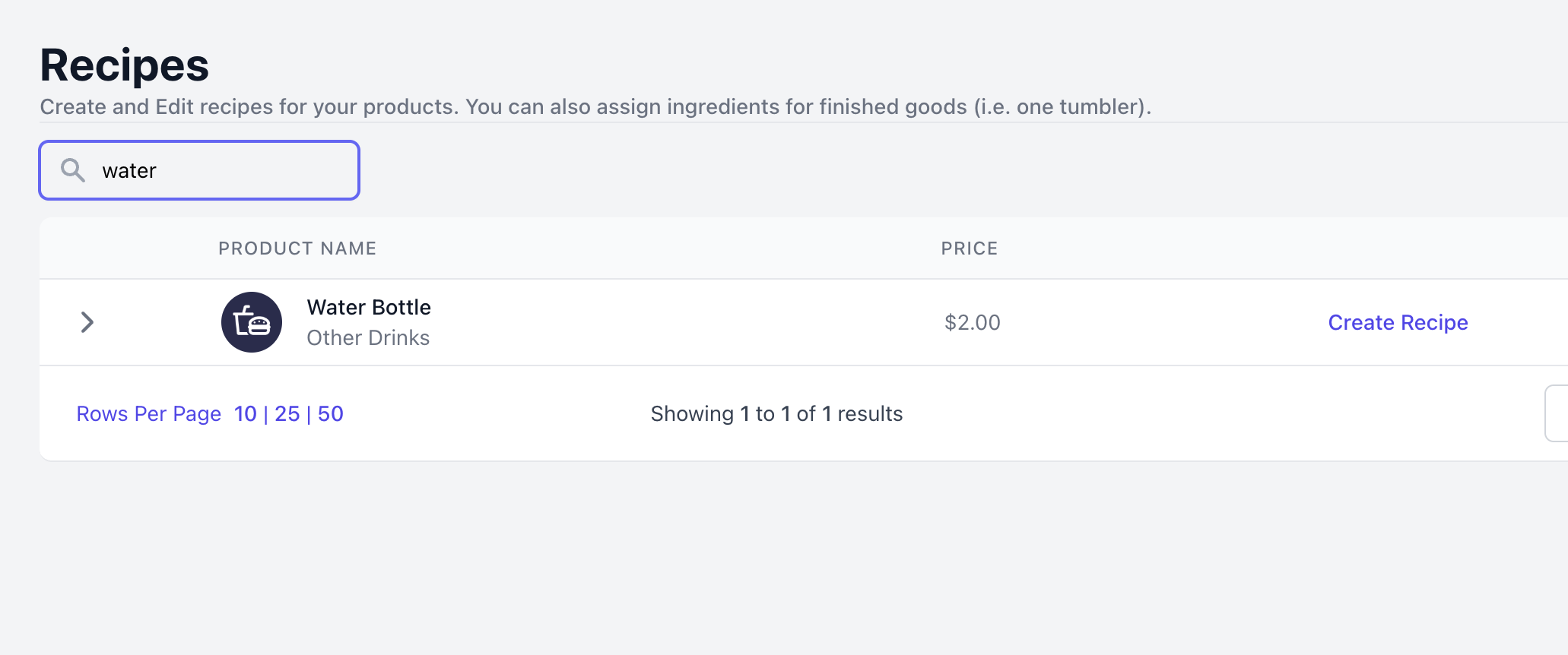

Product with Modifier Options
Product with Modifier Options
Create Ingredients
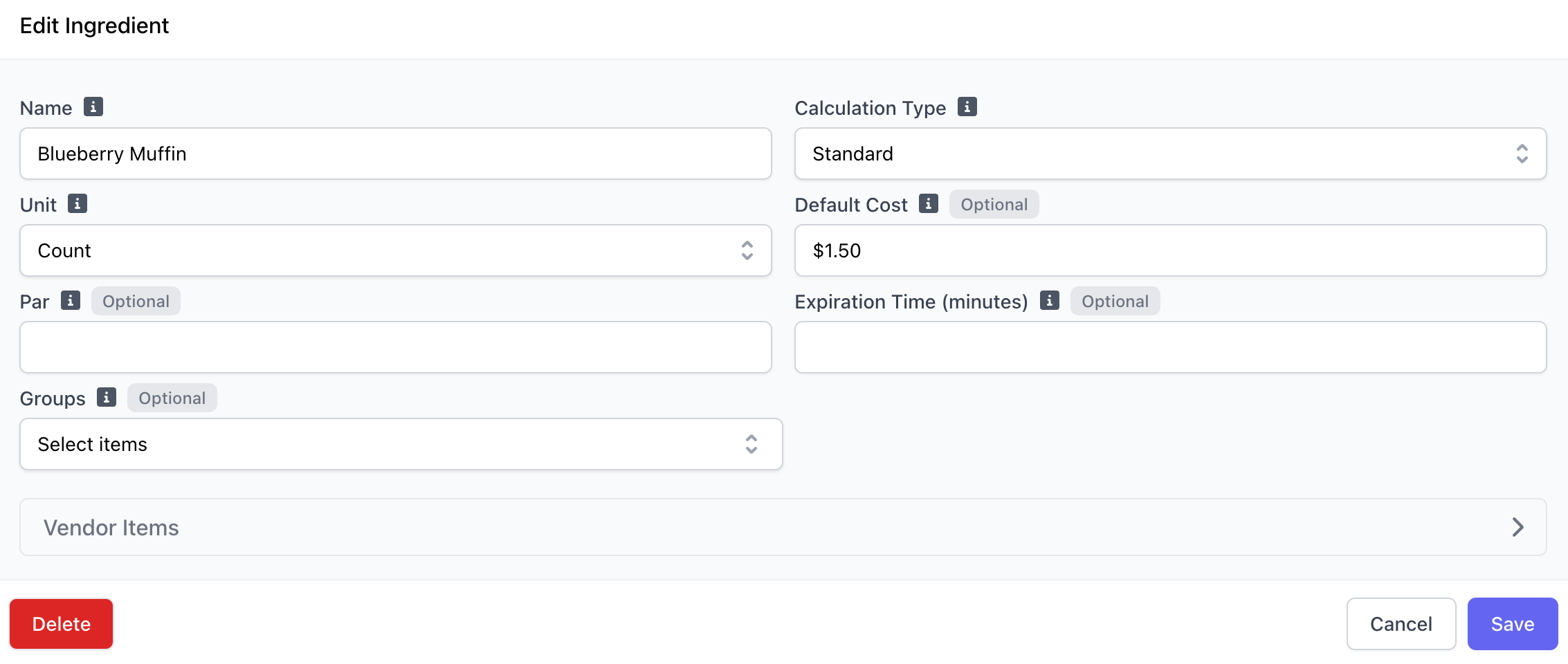
Add Ingredients to Recipe
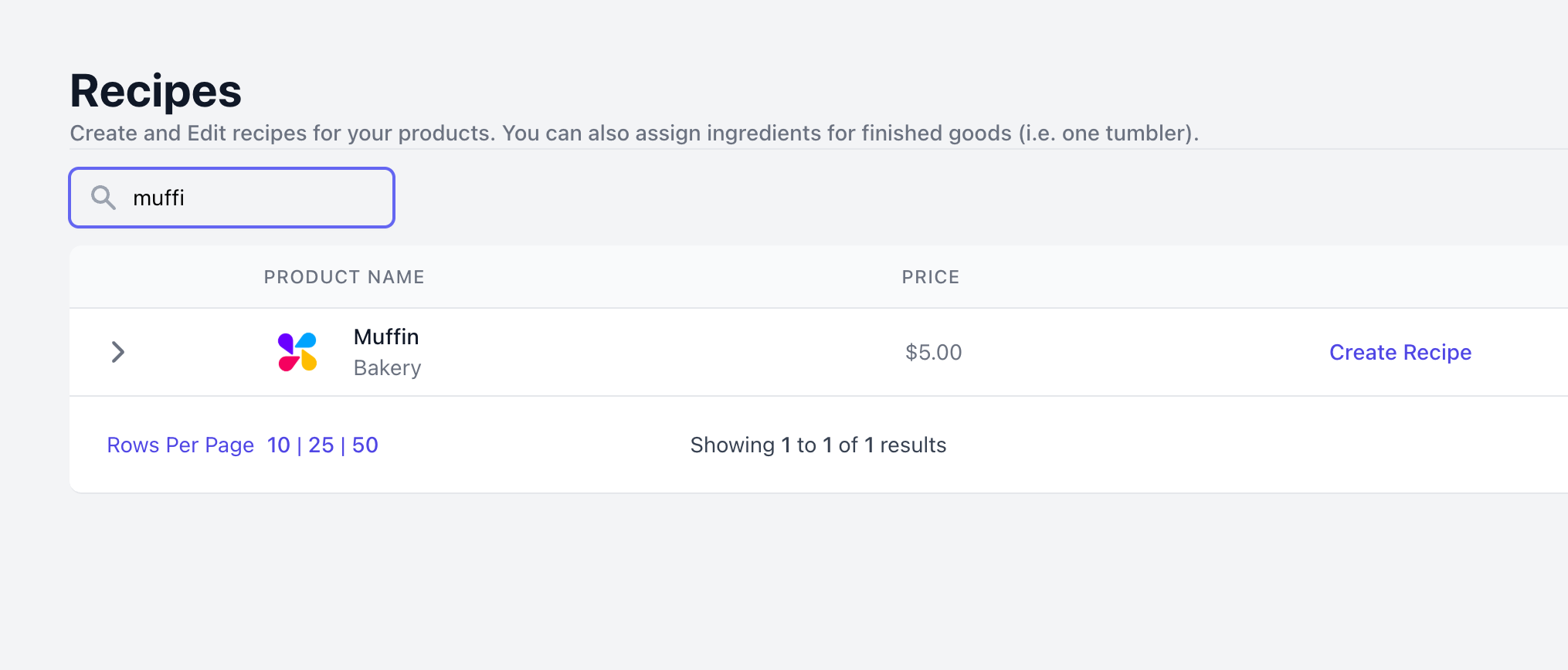
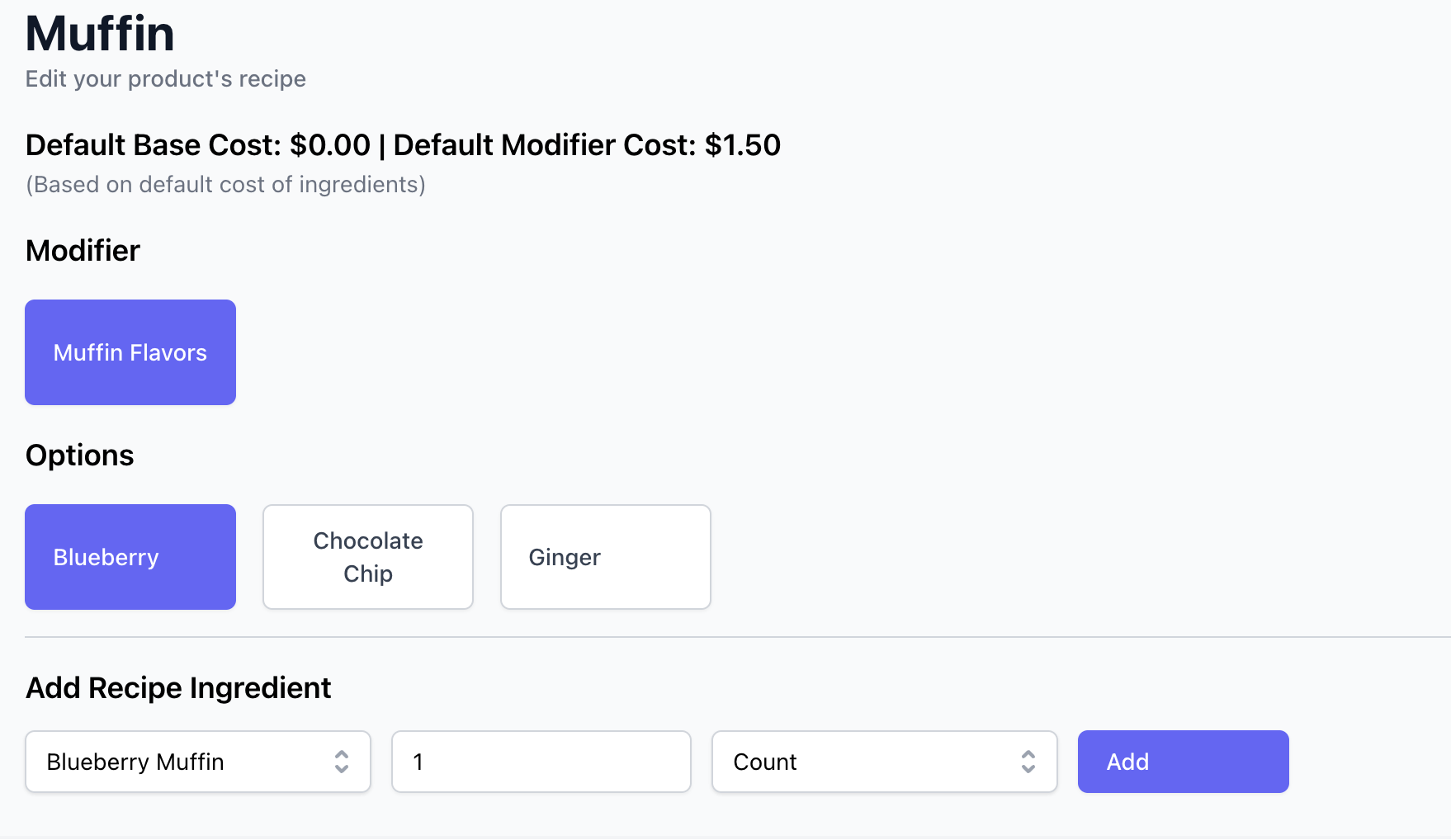
Modifier Recipes
Attach an ingredient to a global modifier For example, all iced drinks use one straw. Add the ingredient of one straw to the Temperature = Iced modifier.Create Modifier Recipe
Create Modifier Recipe
